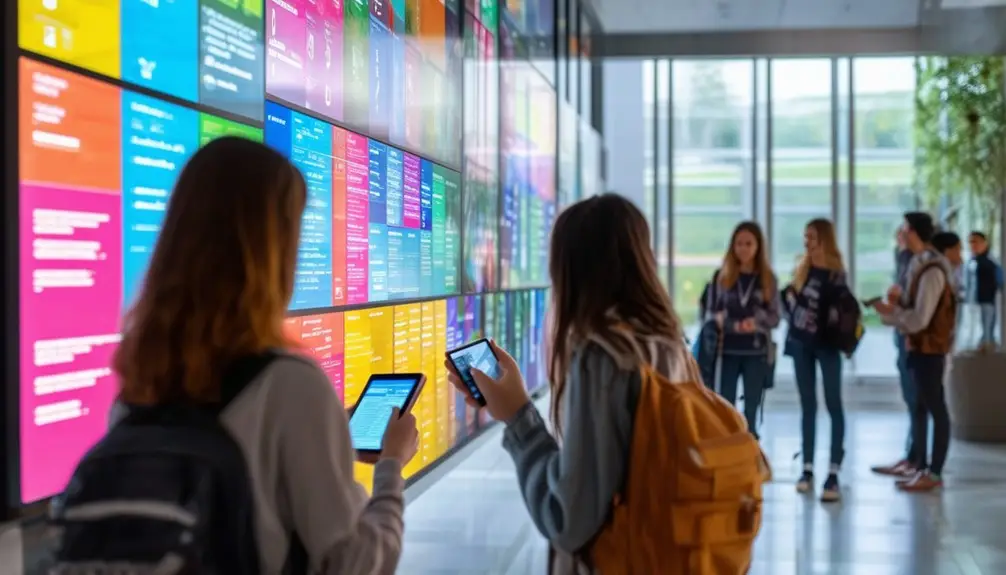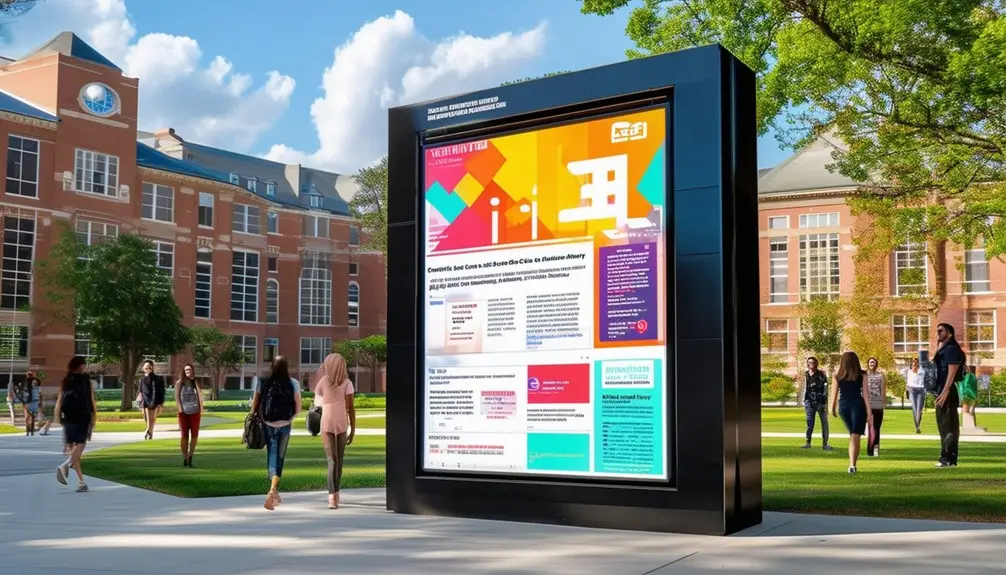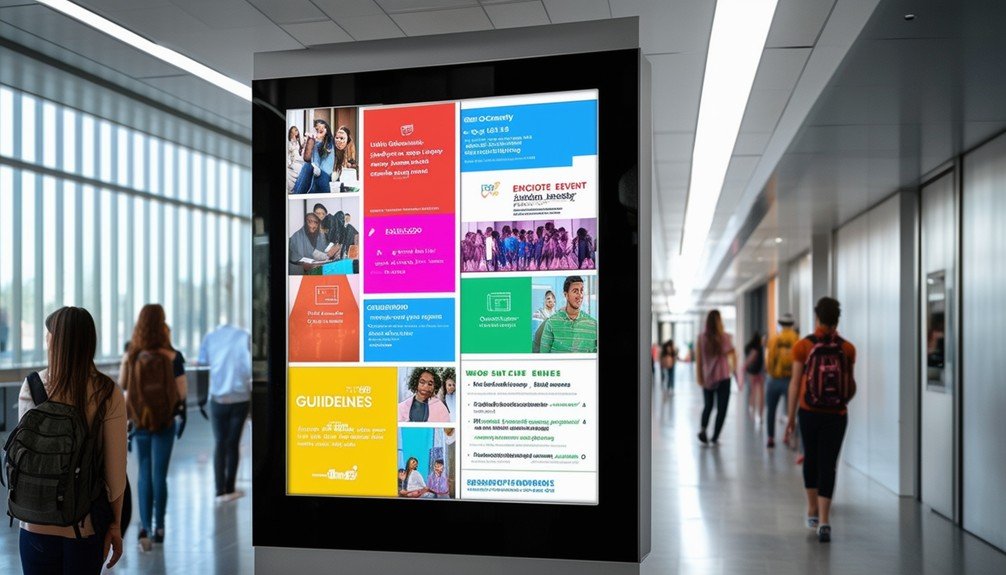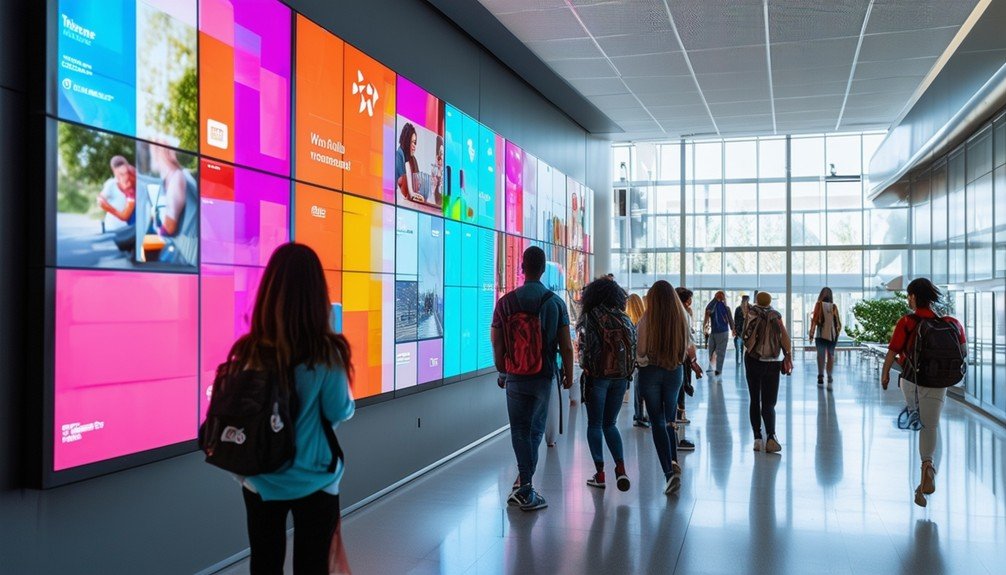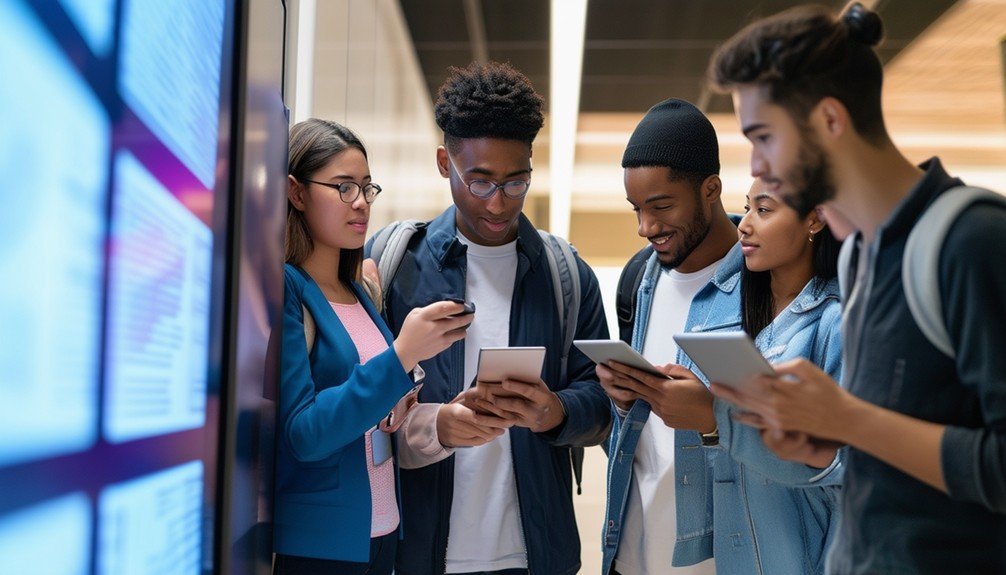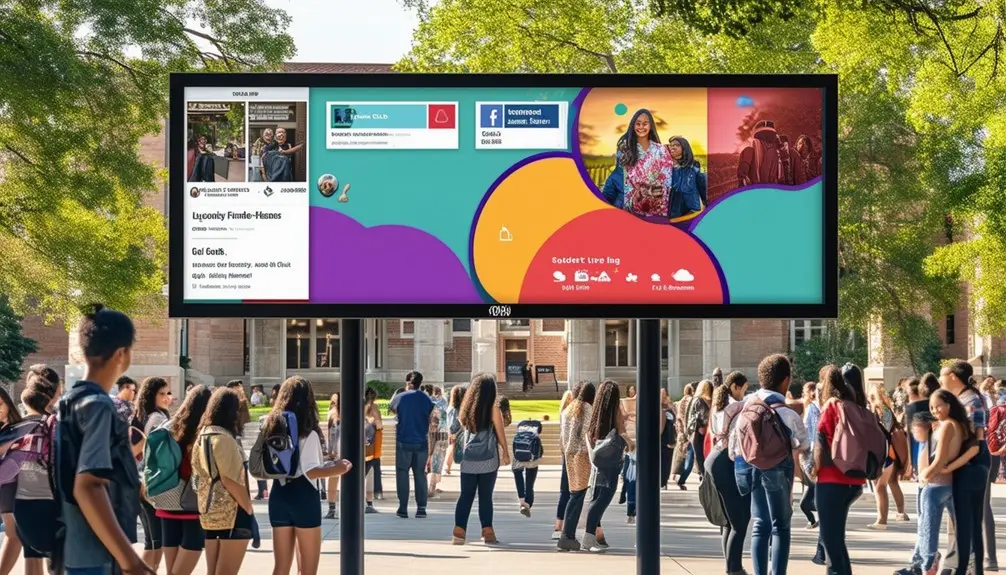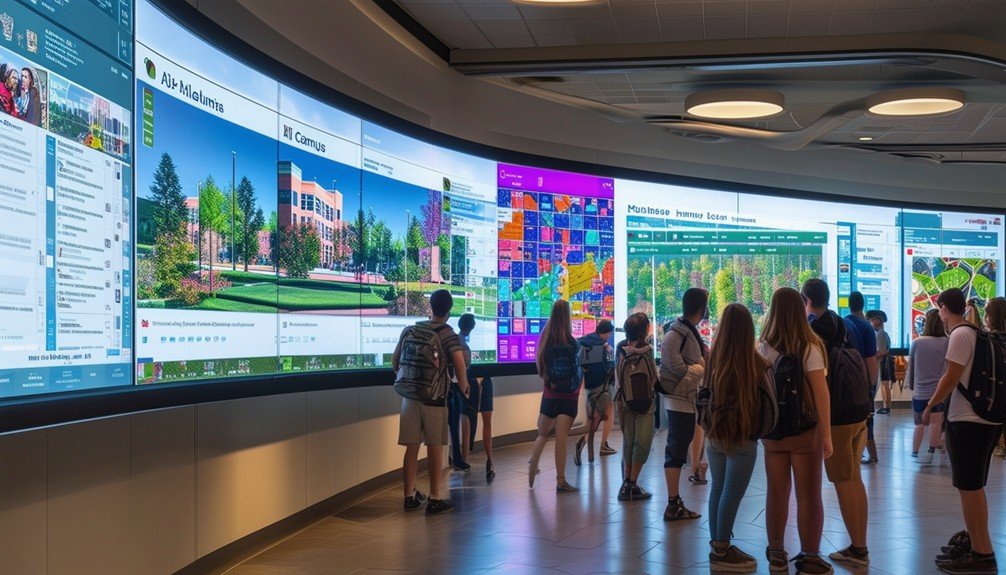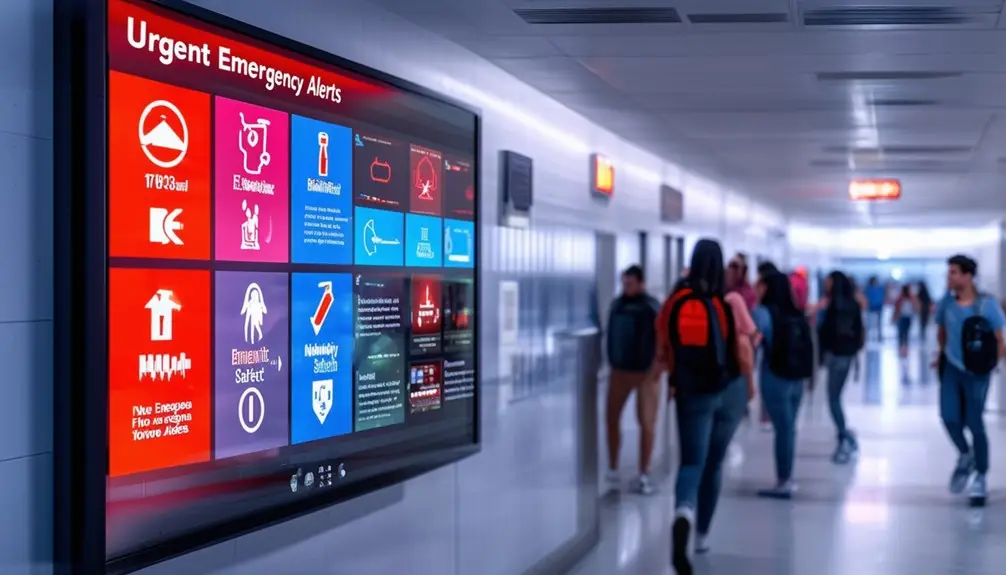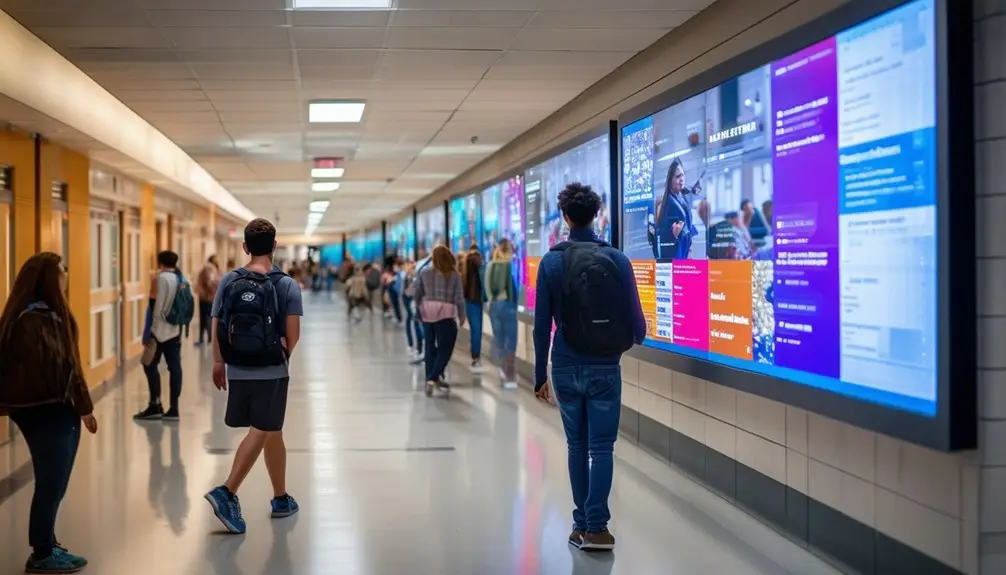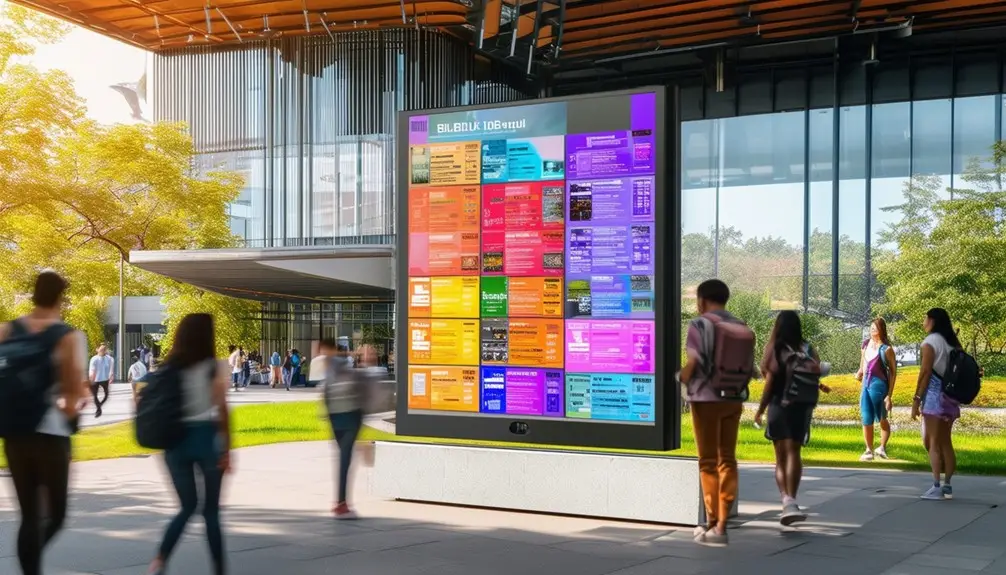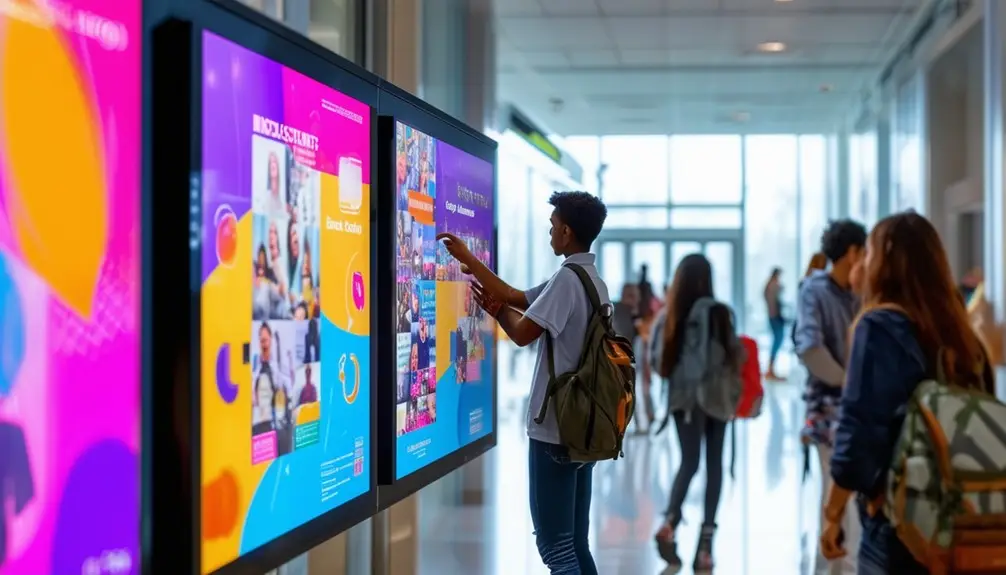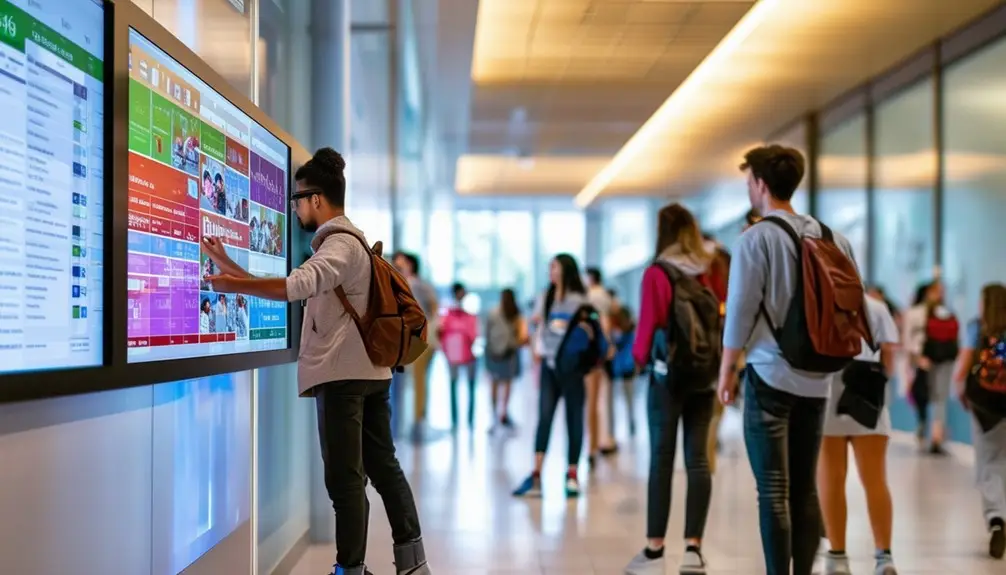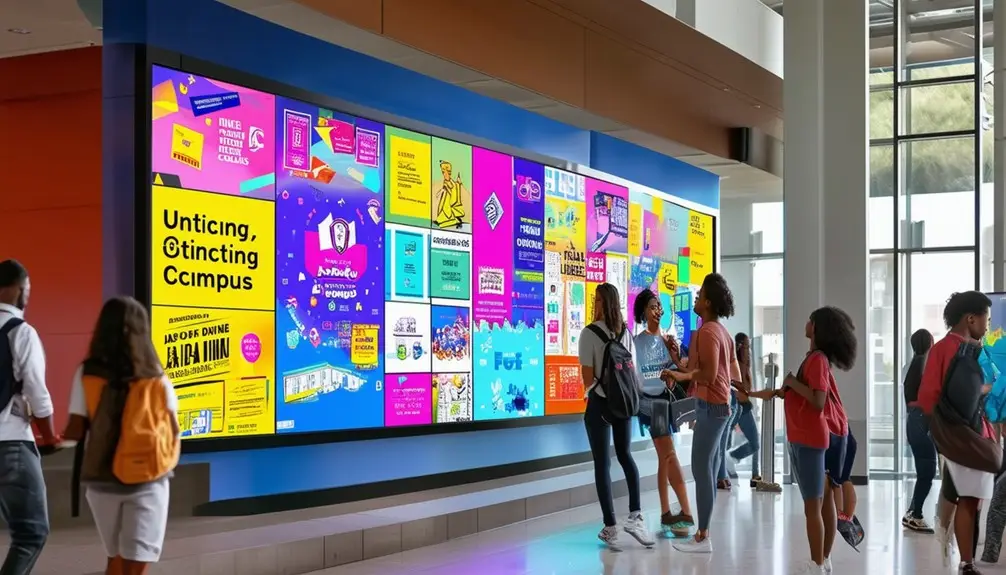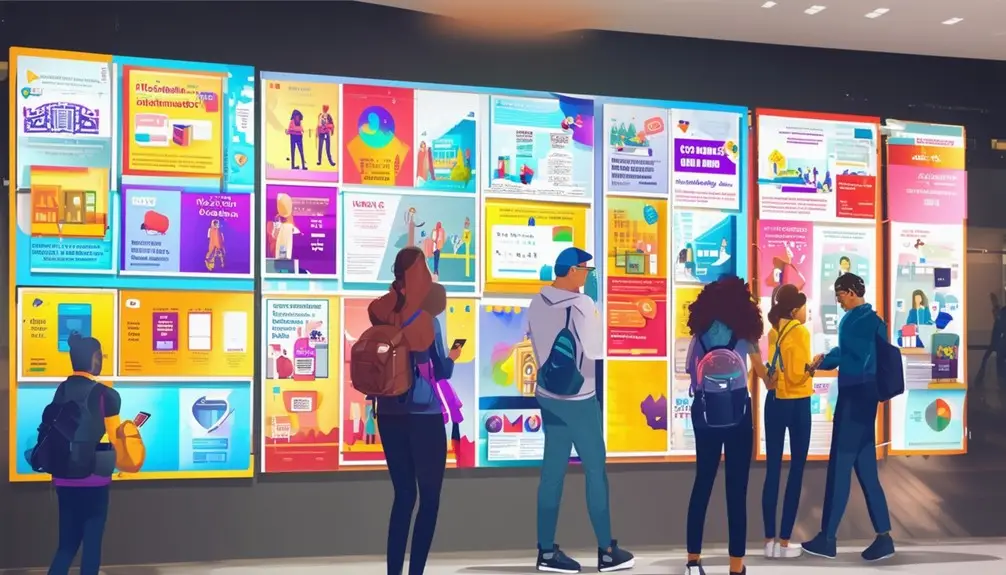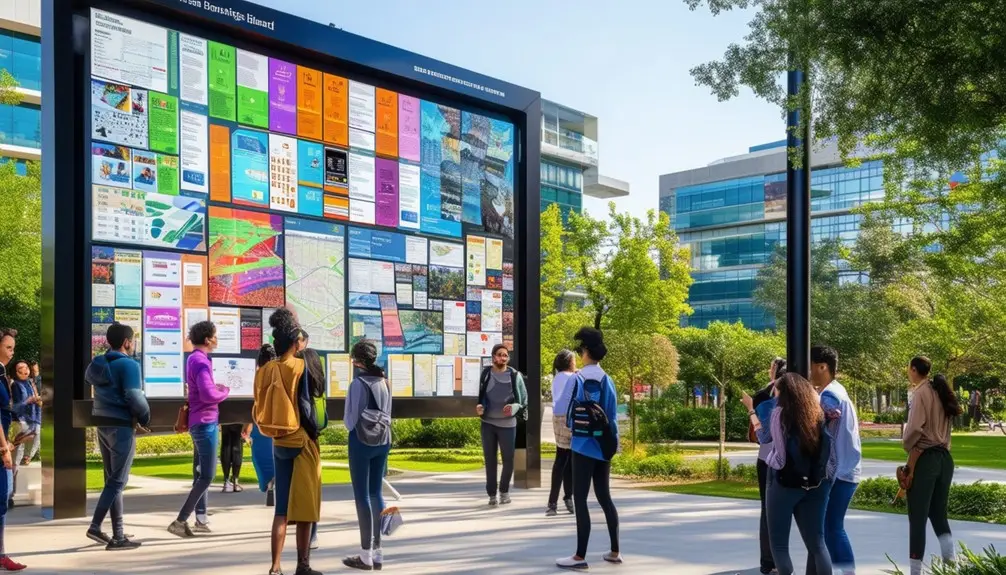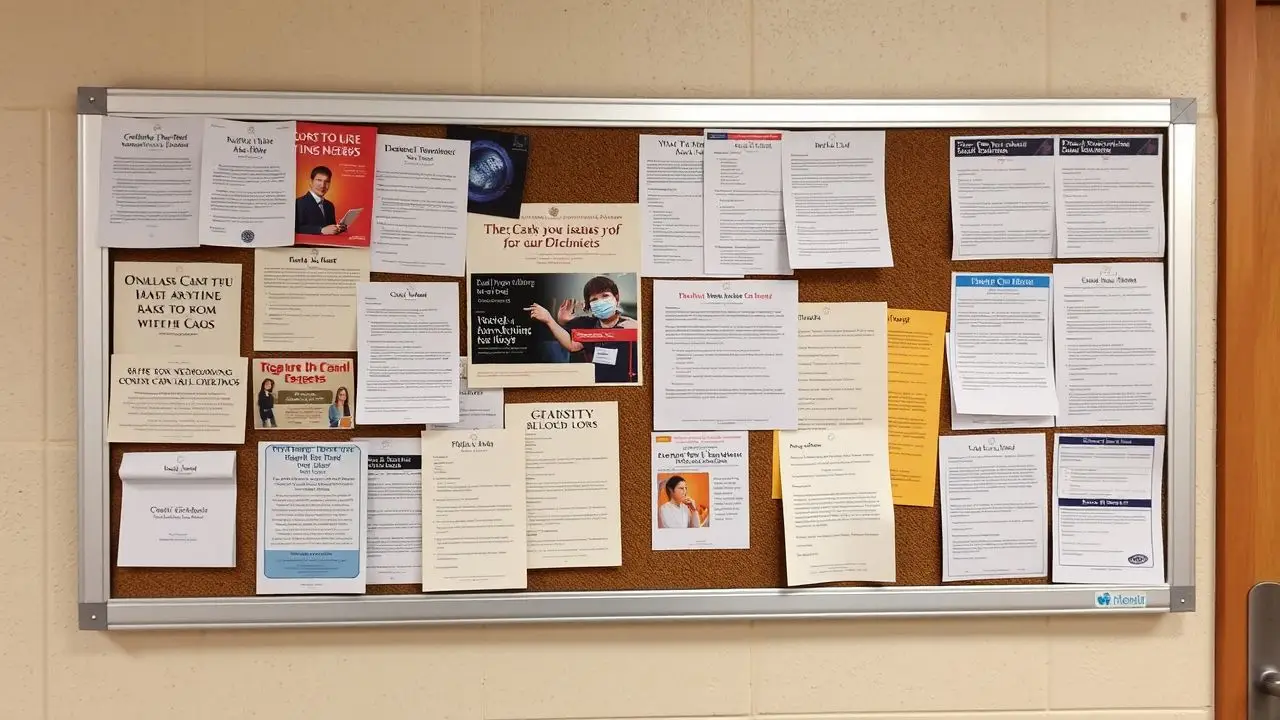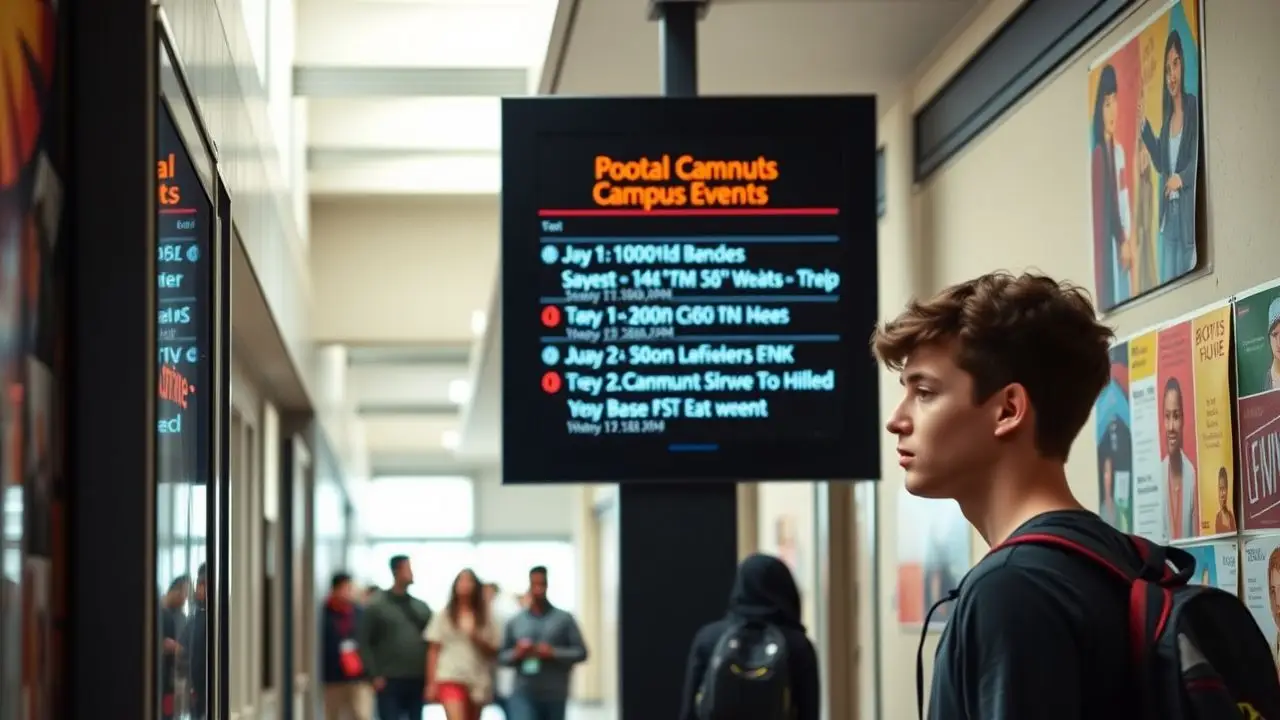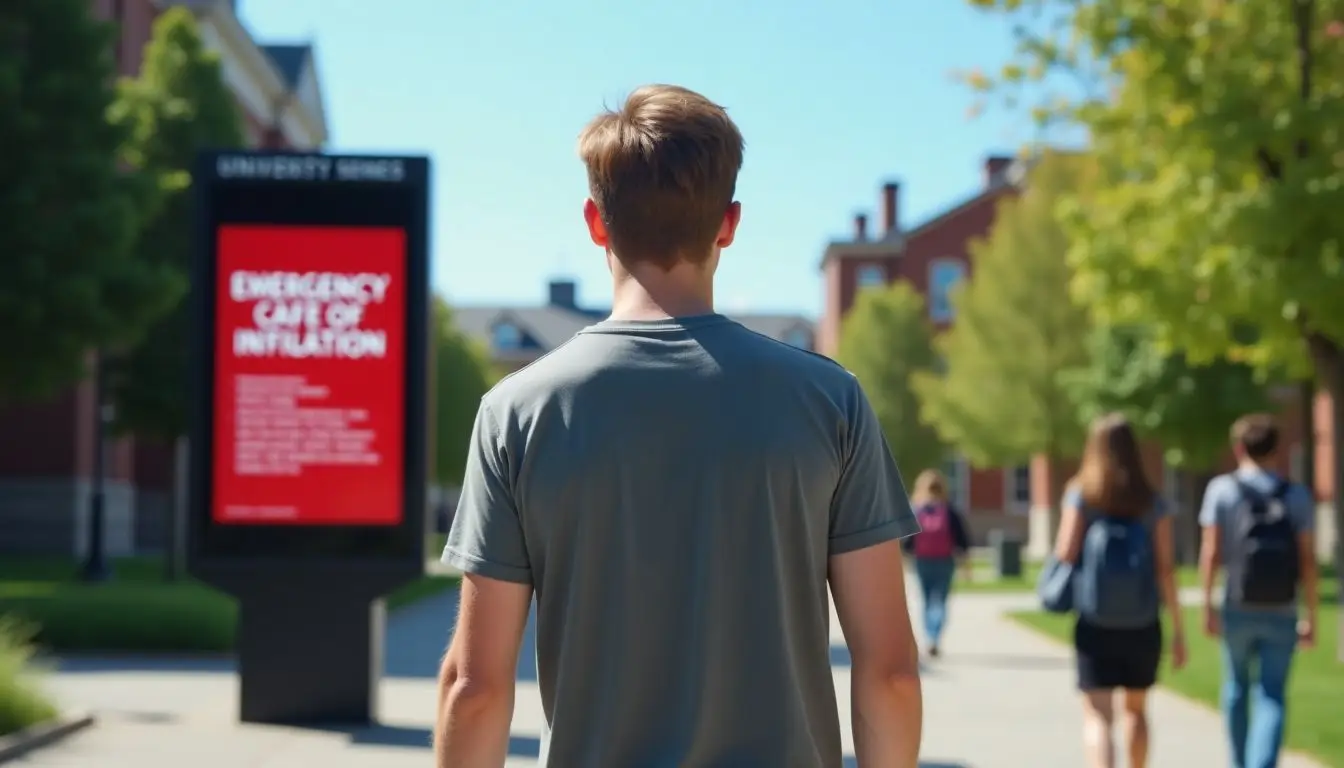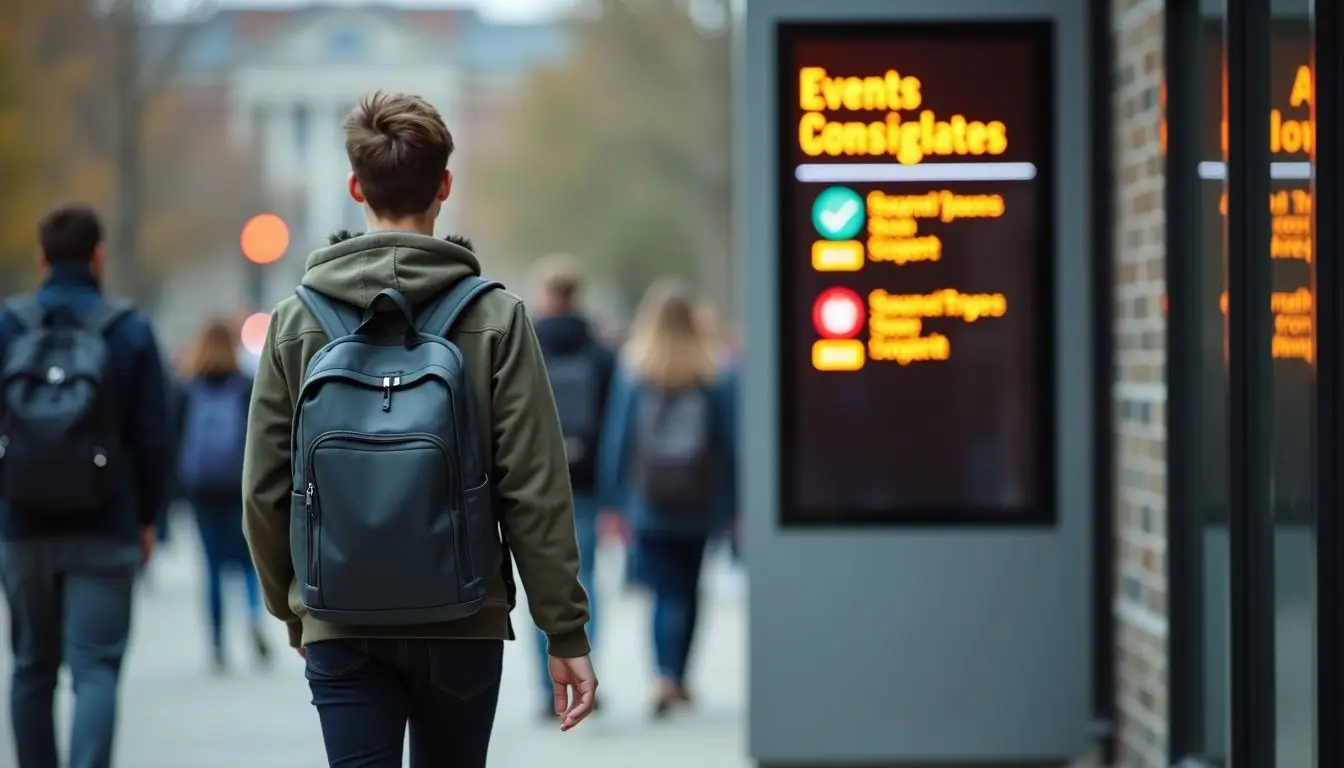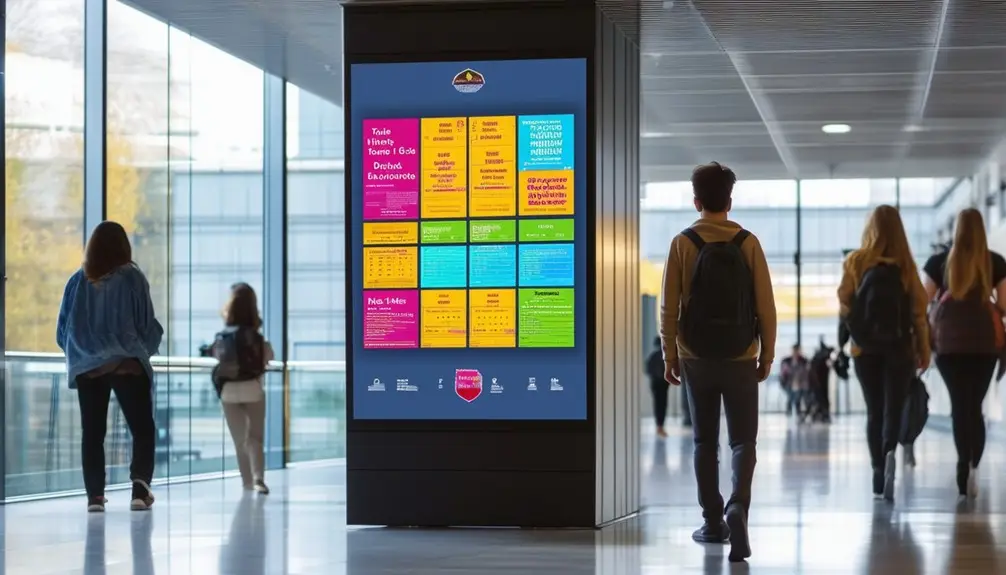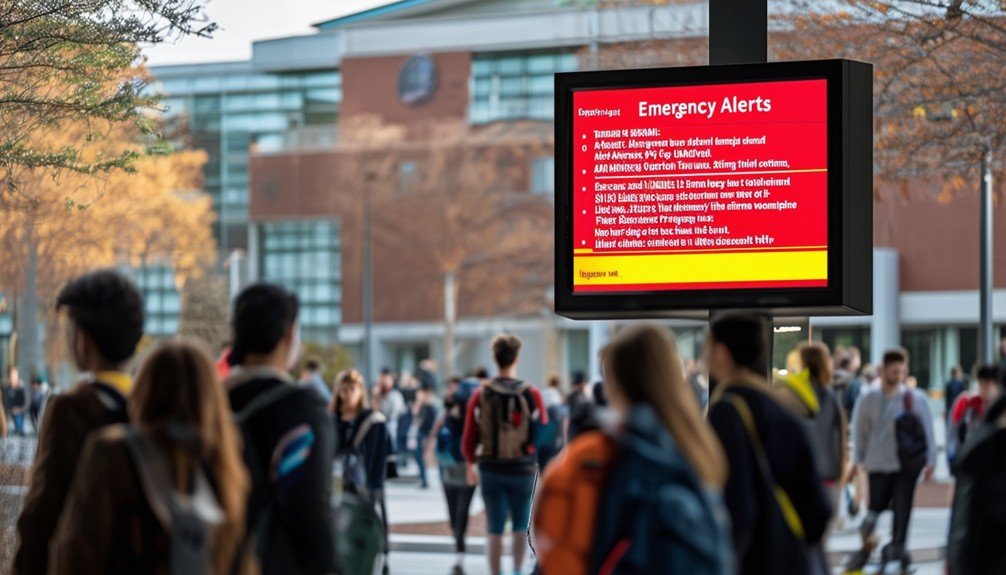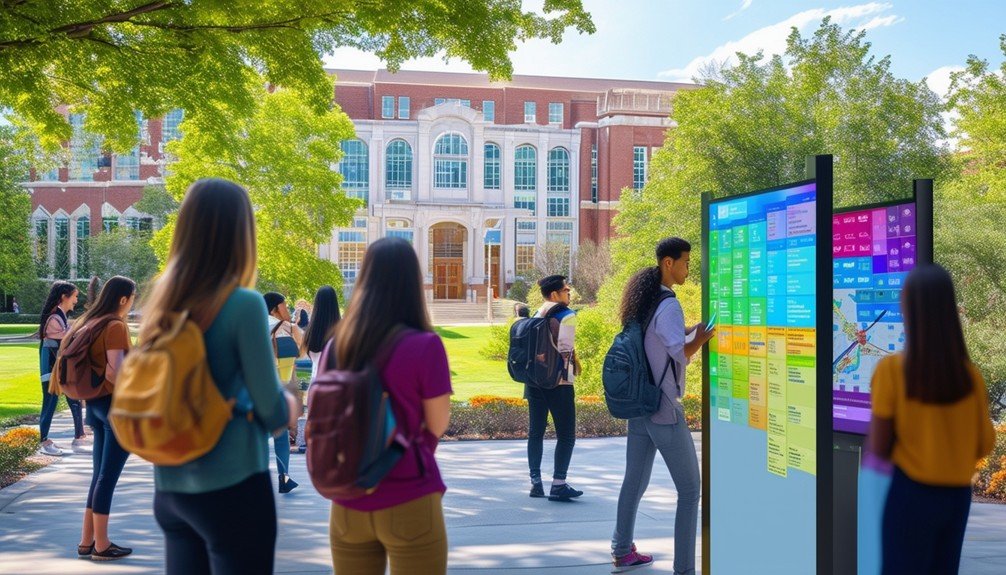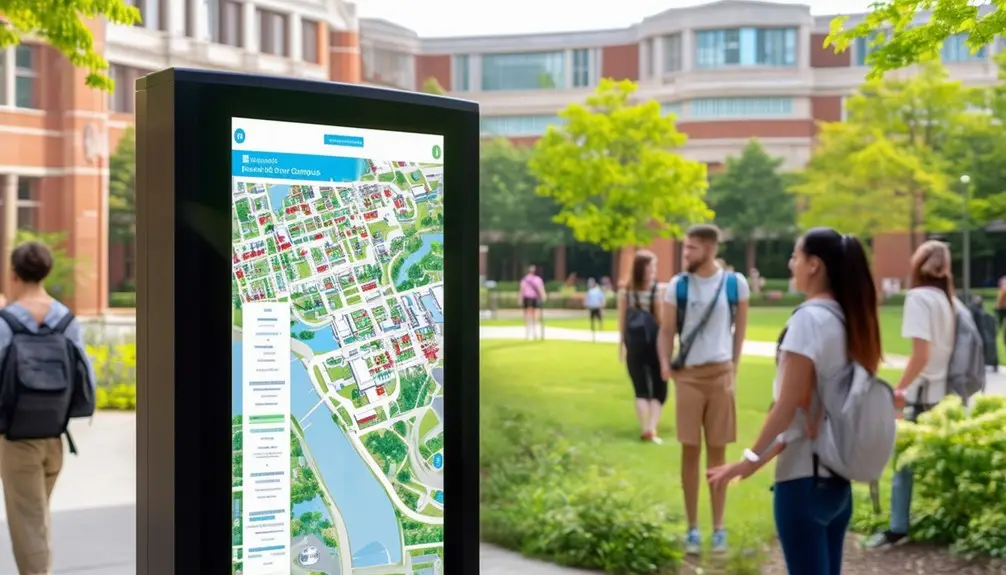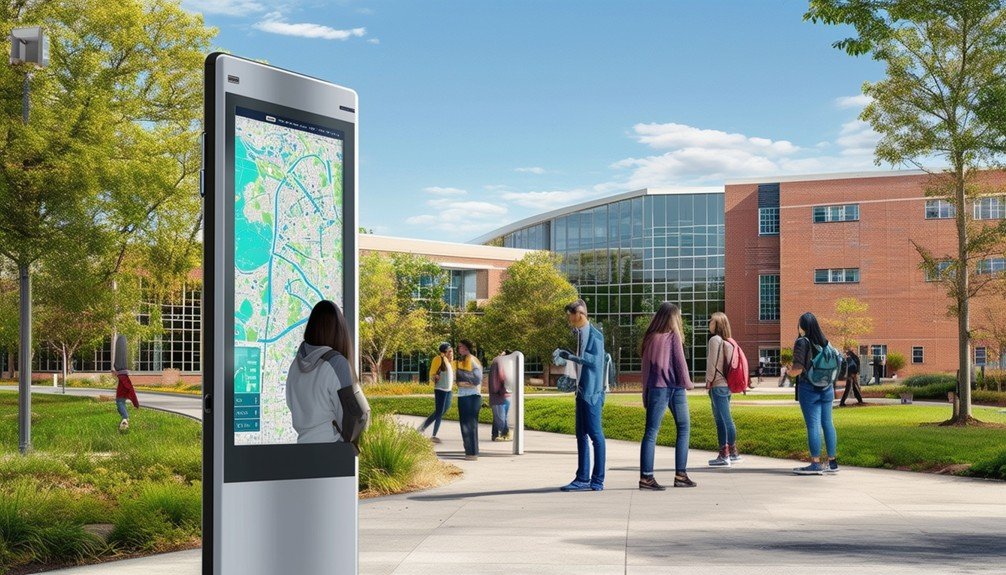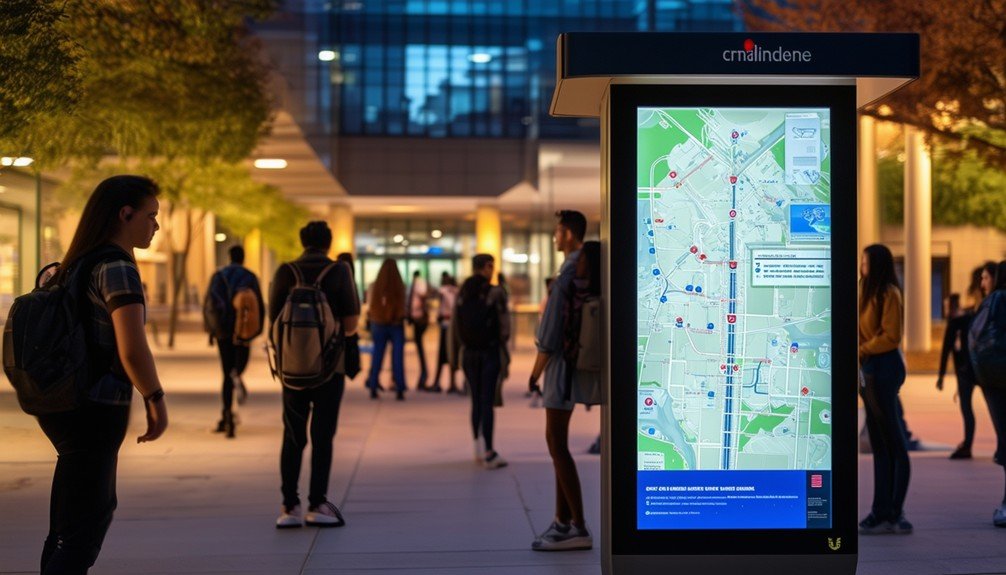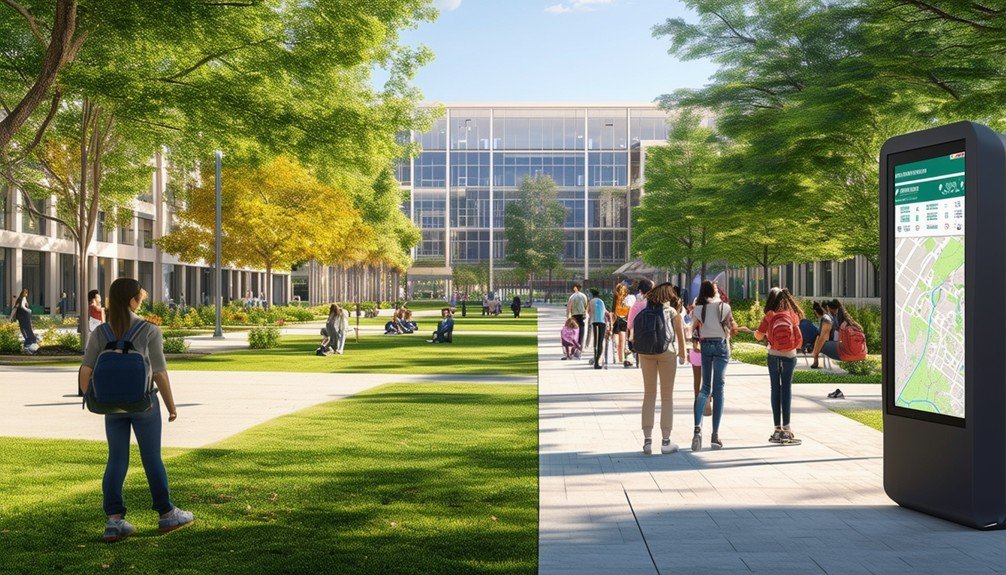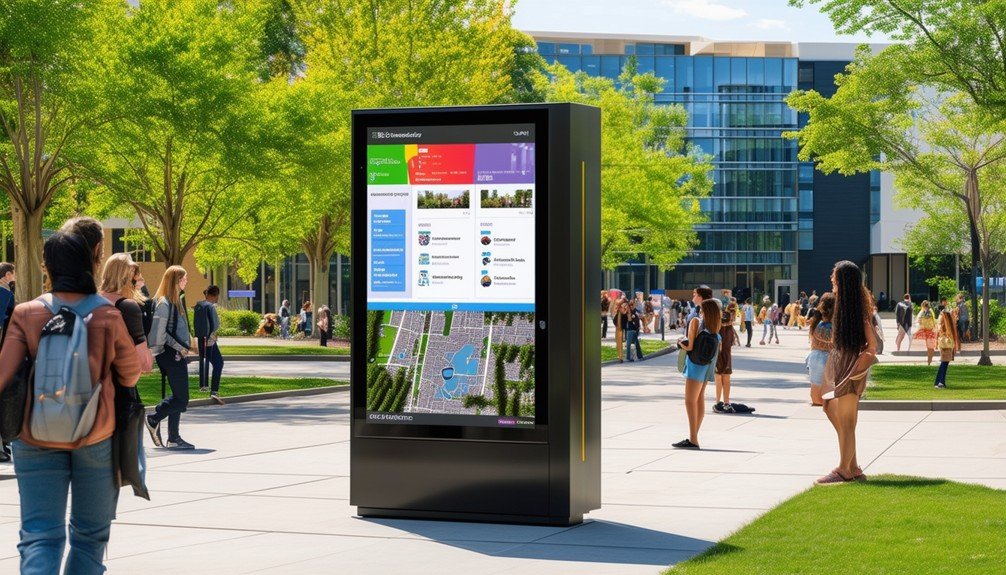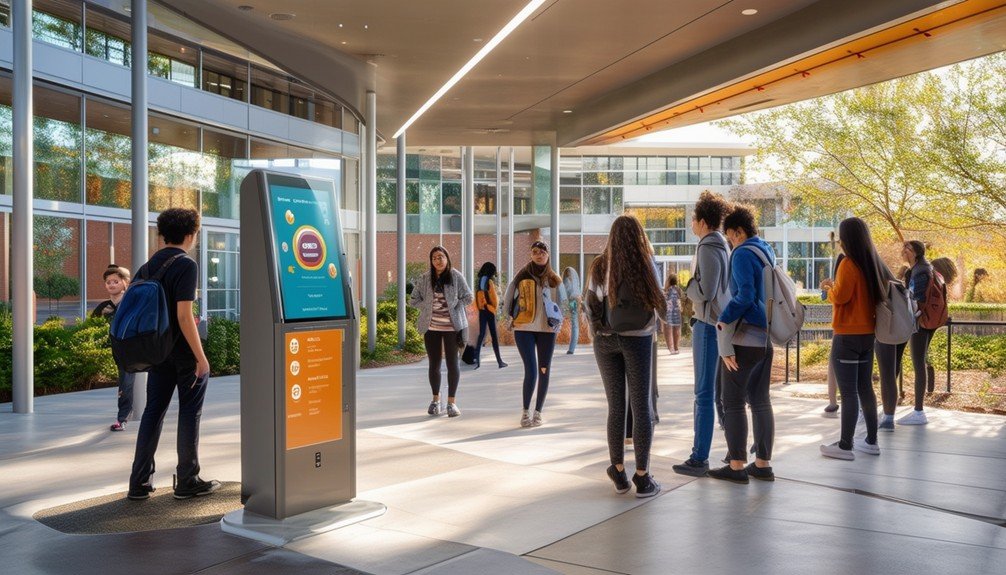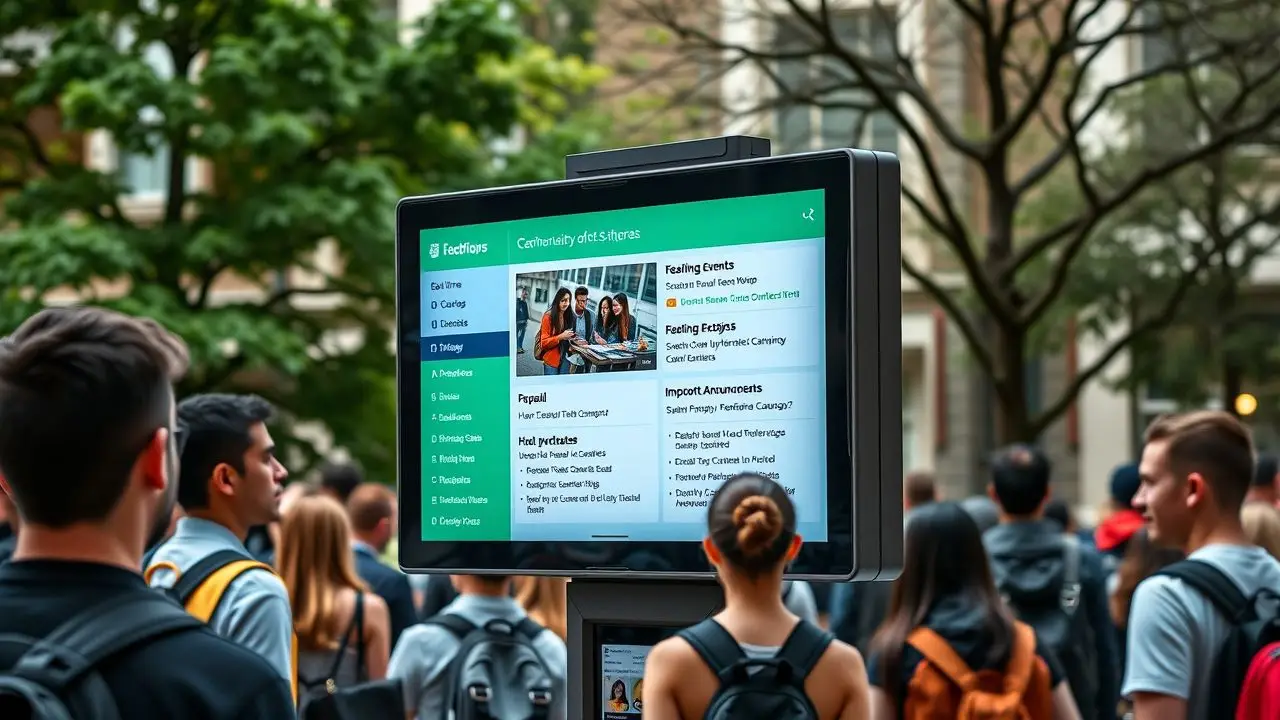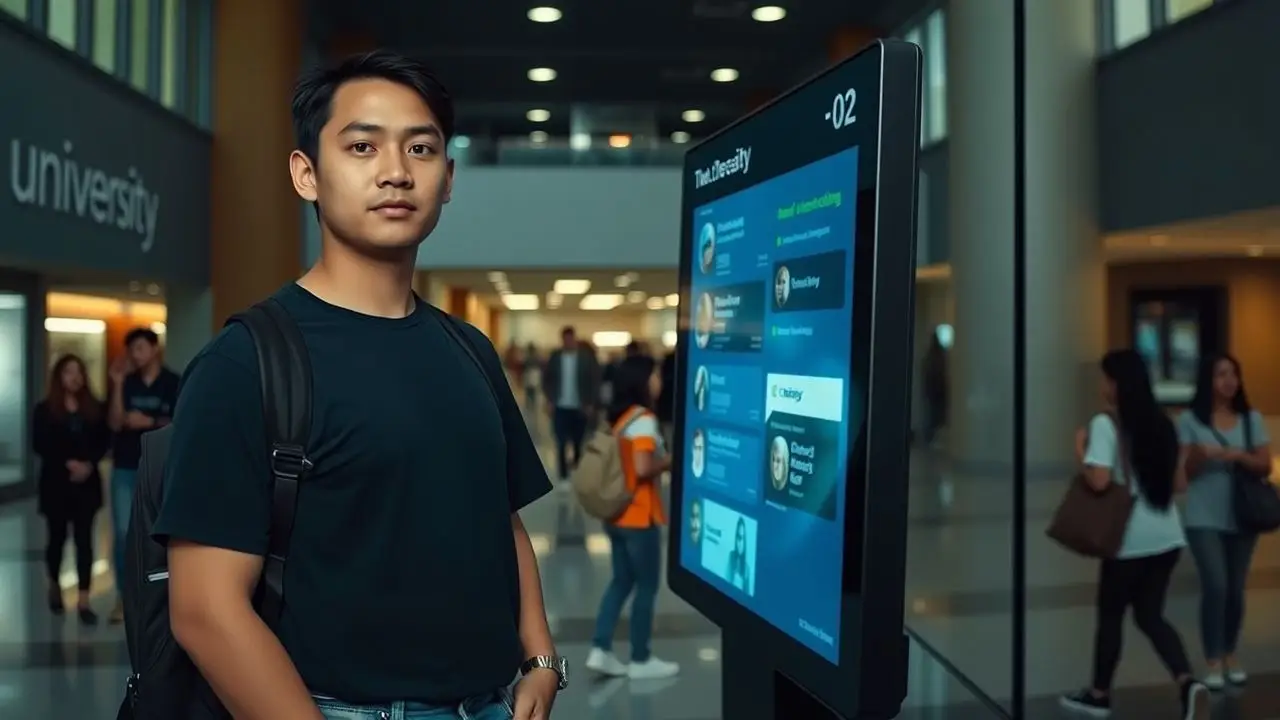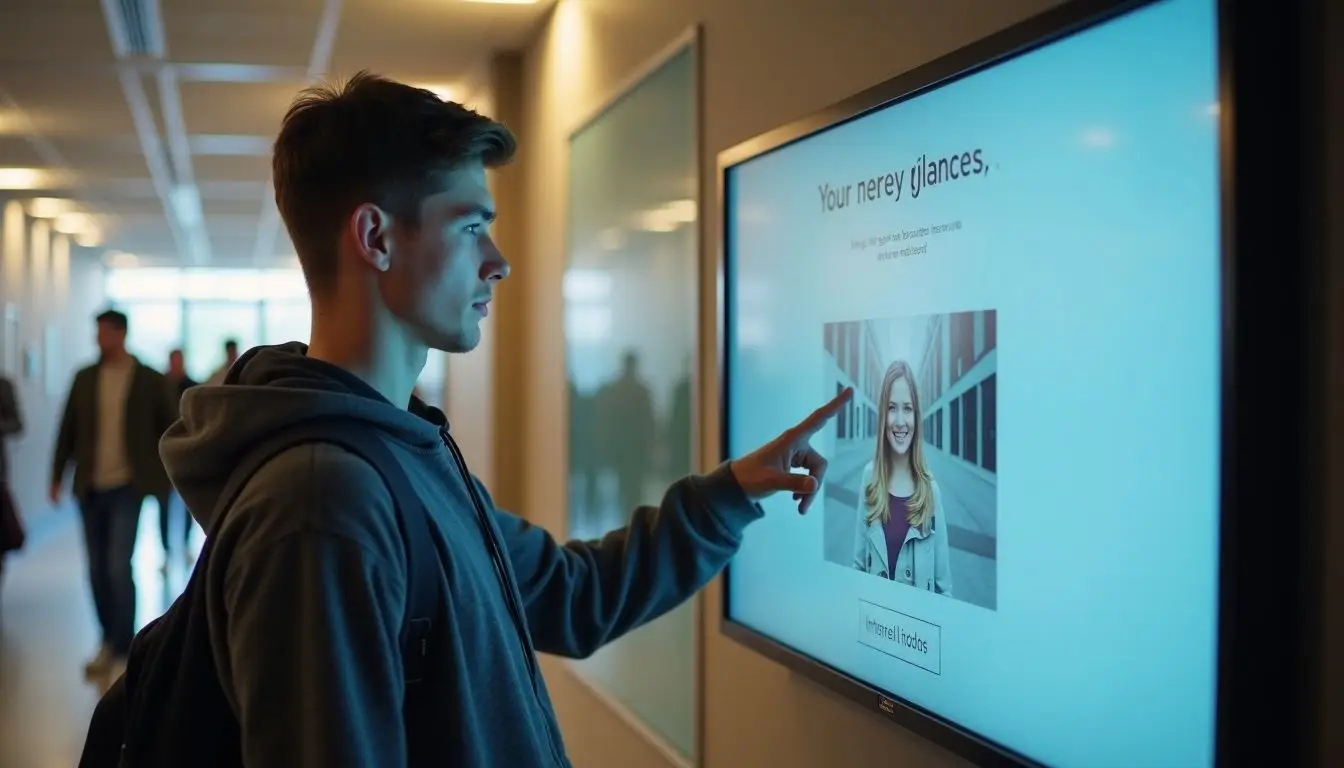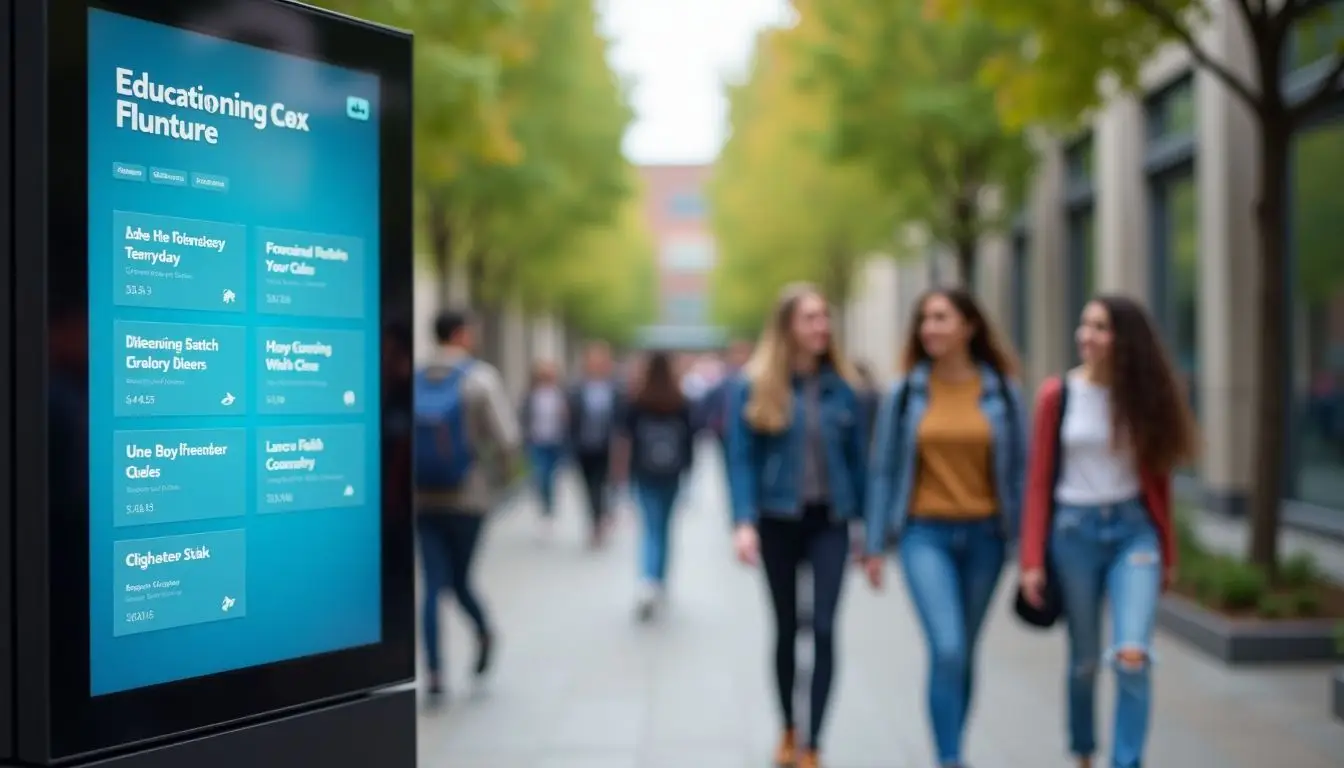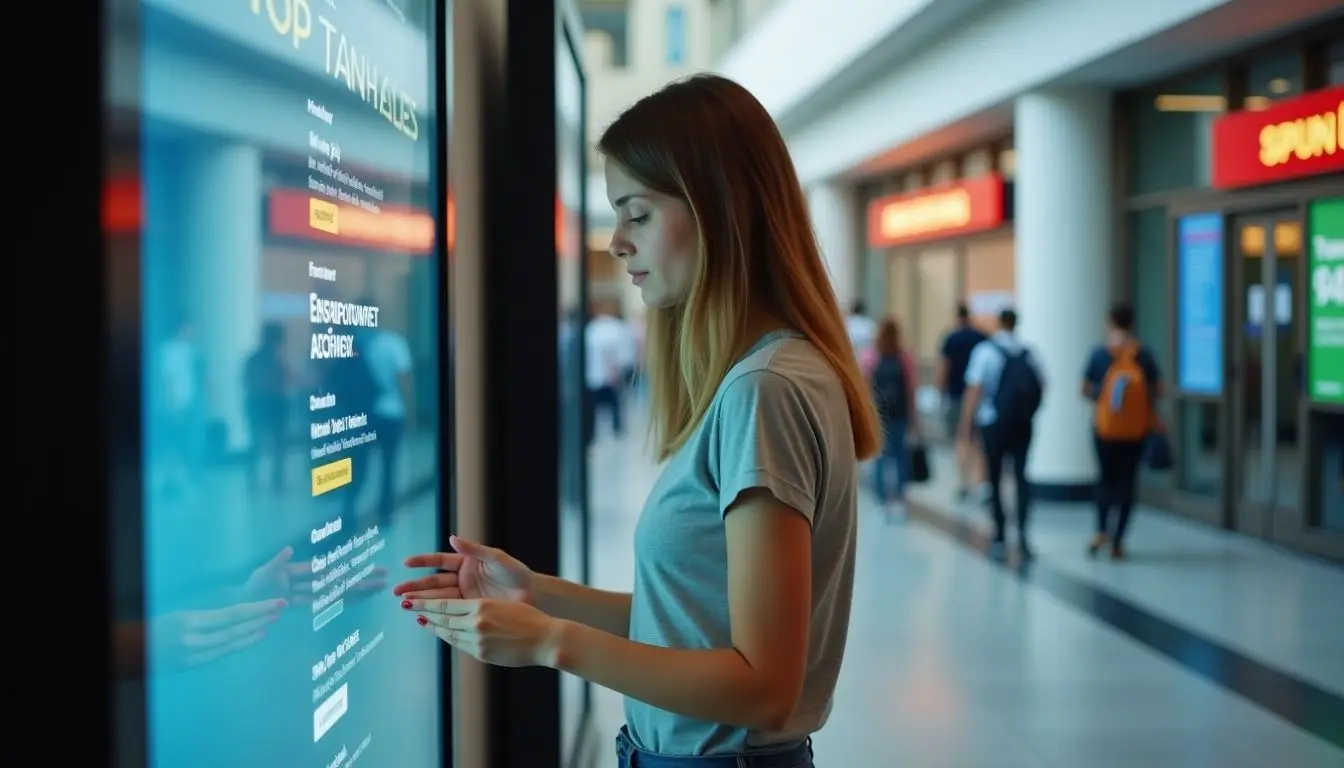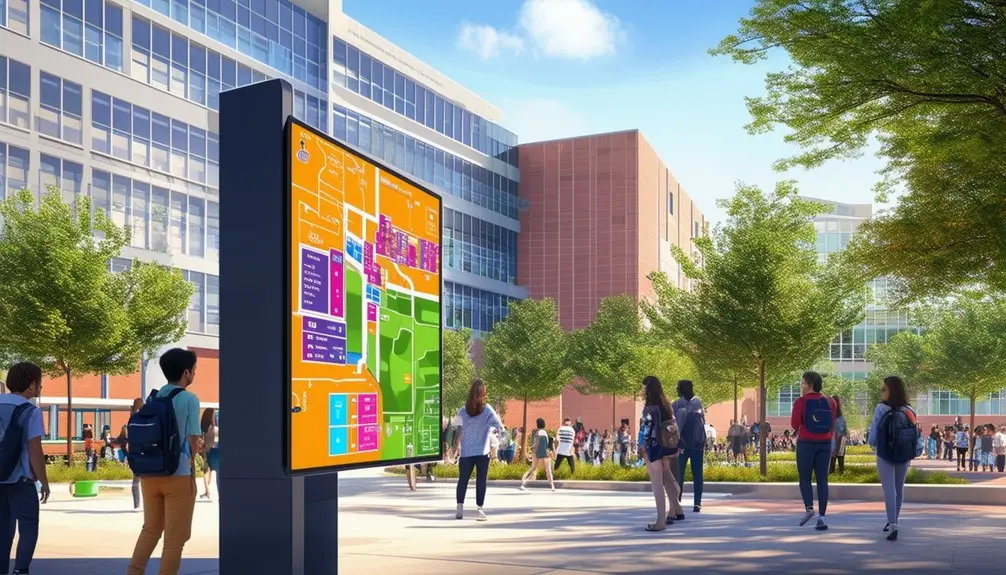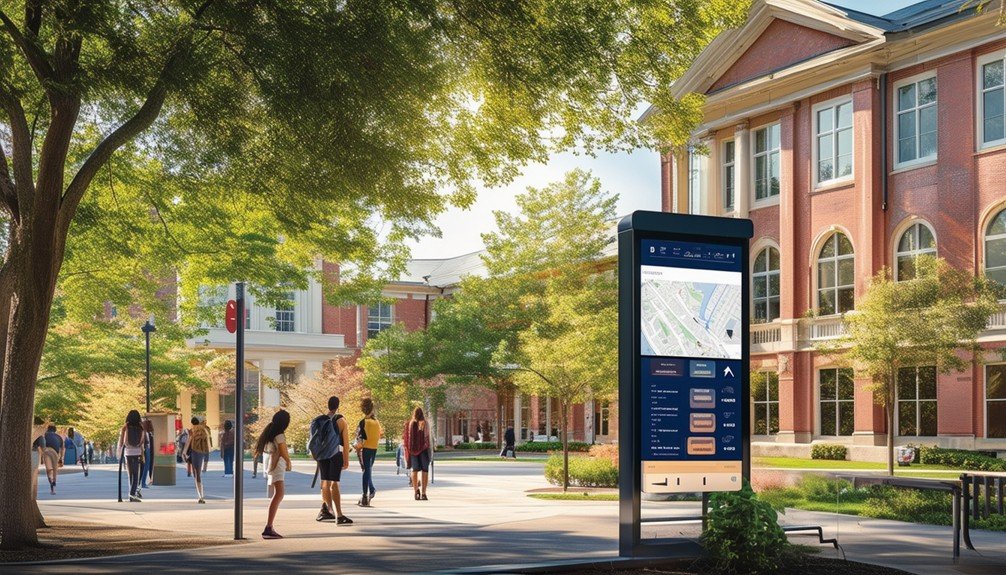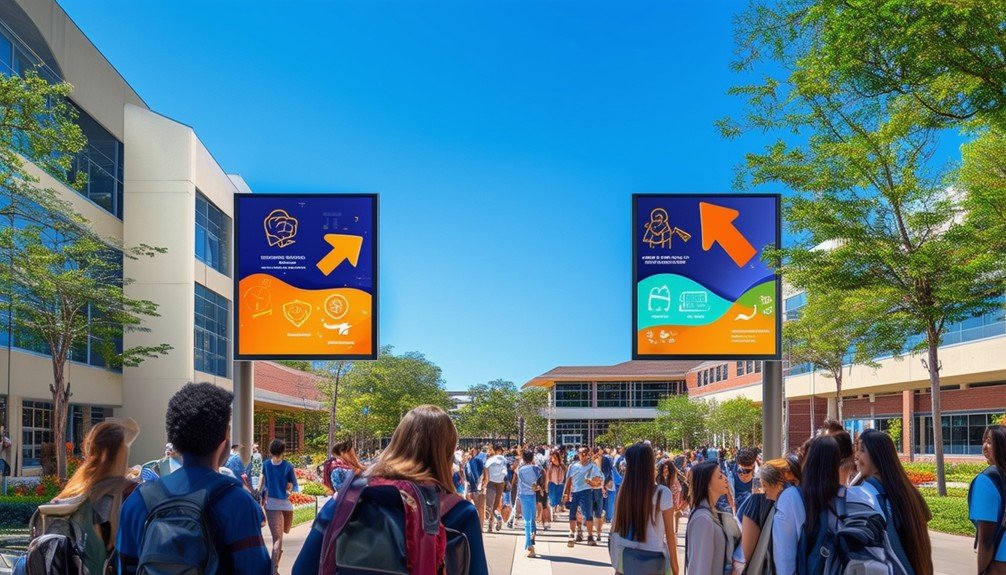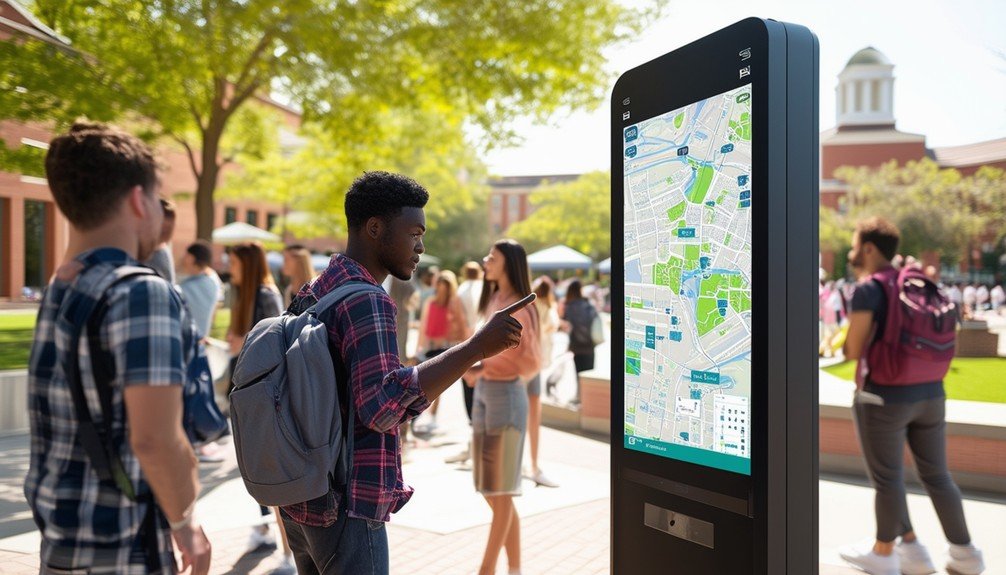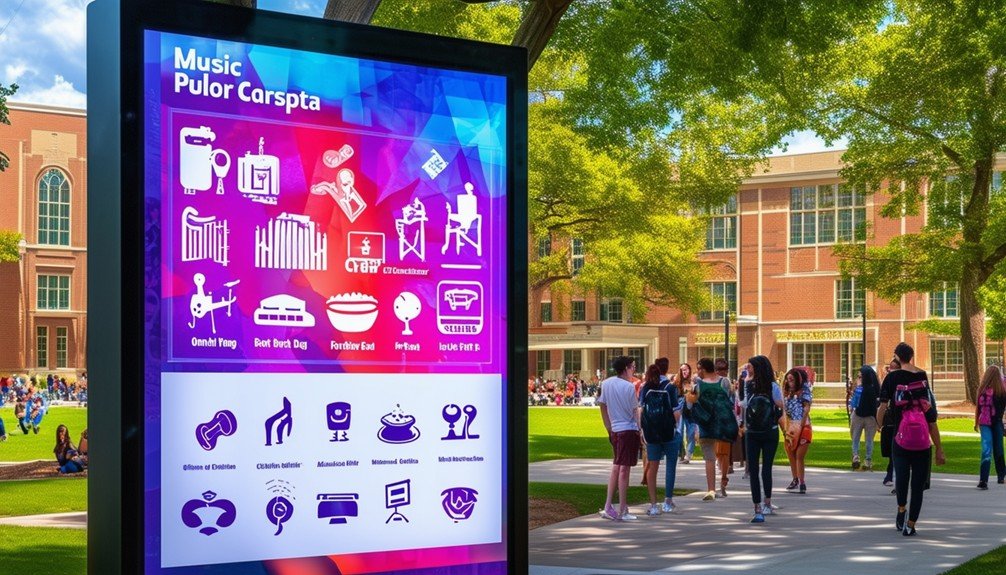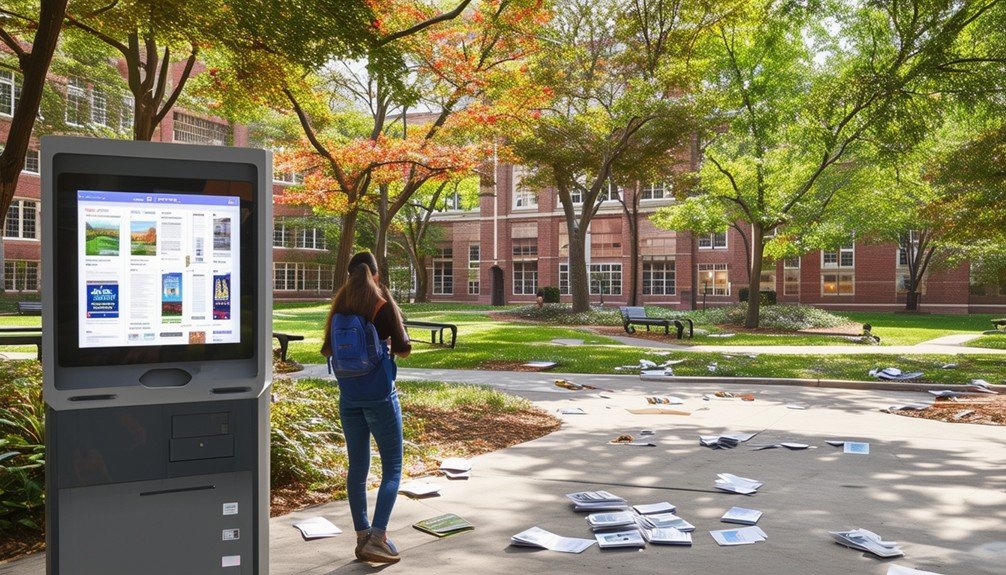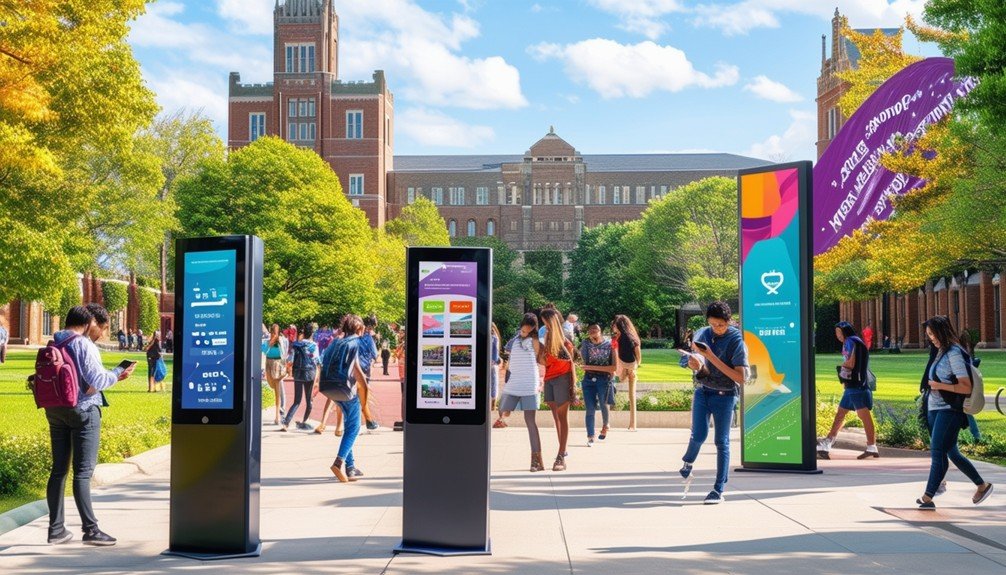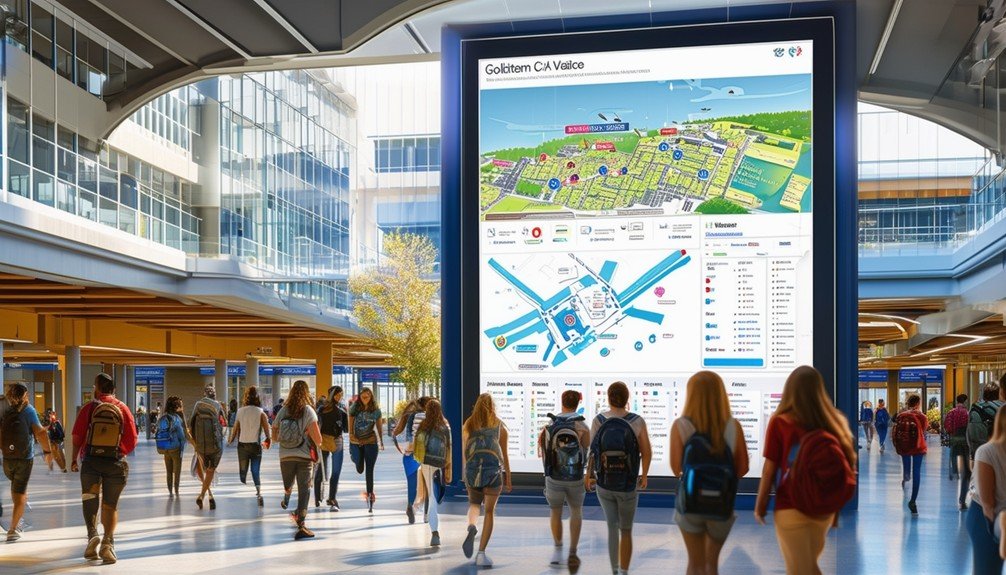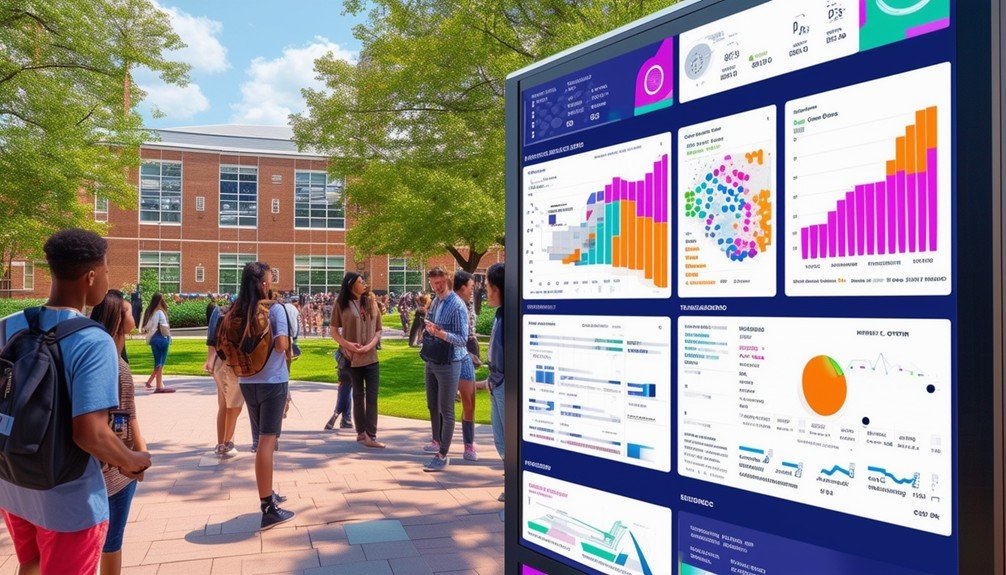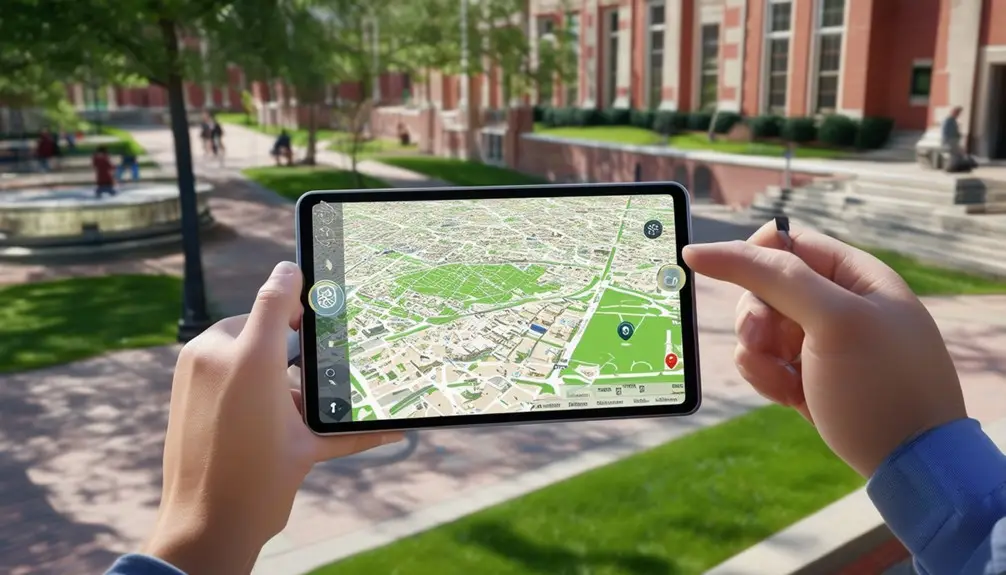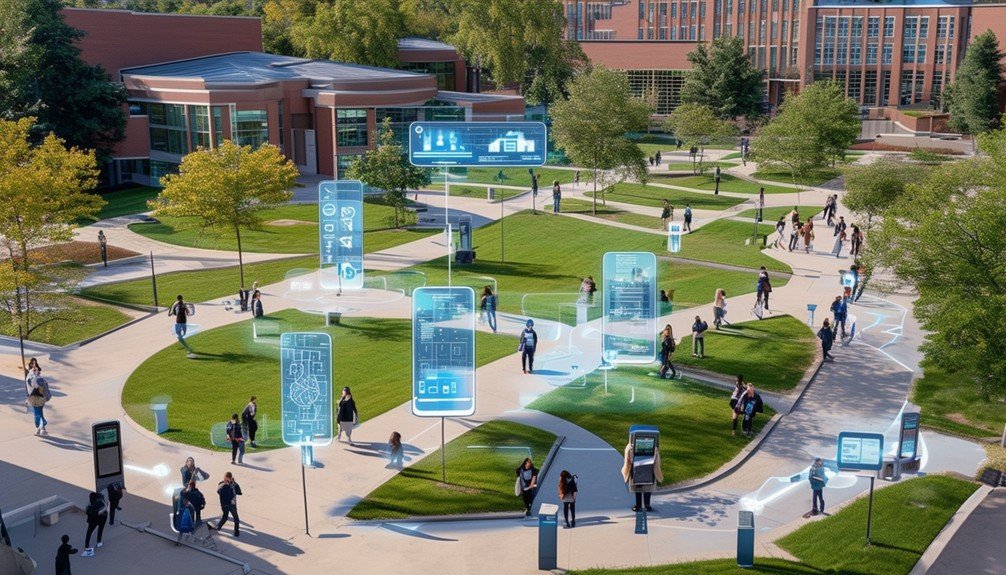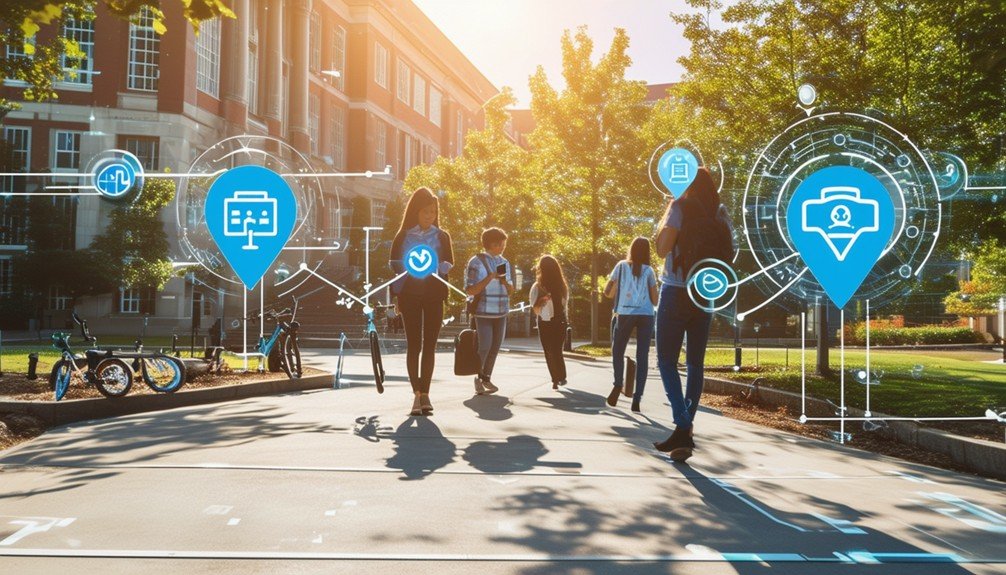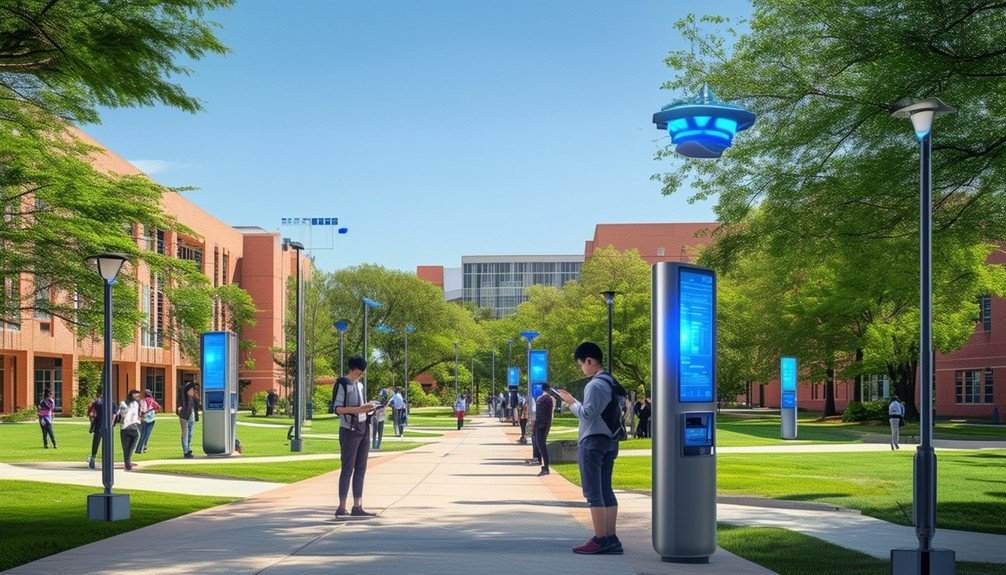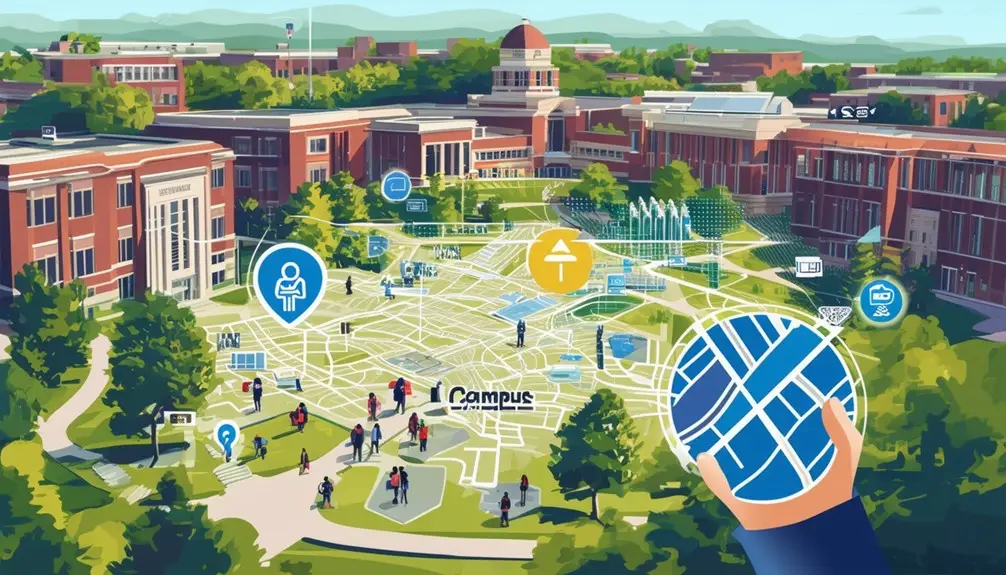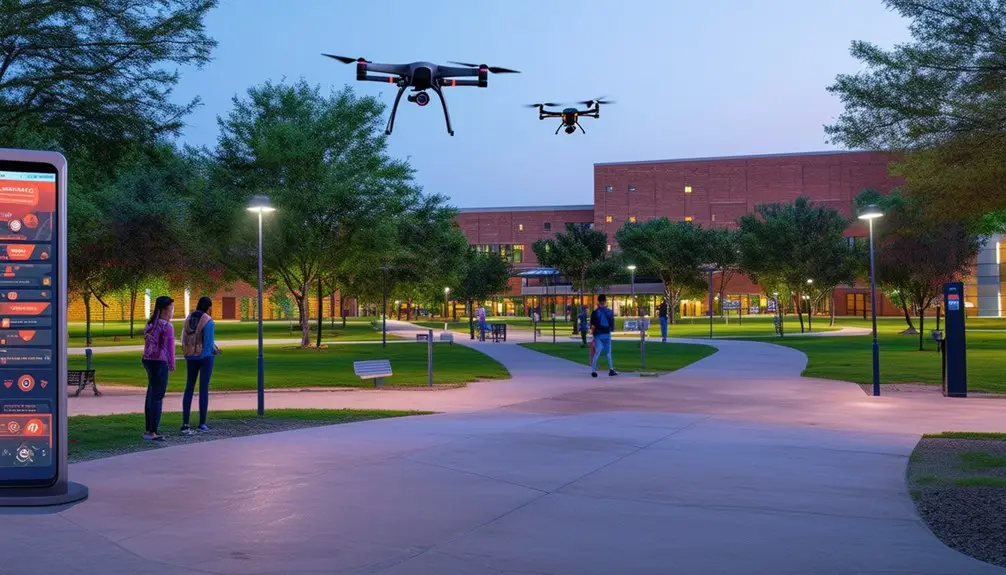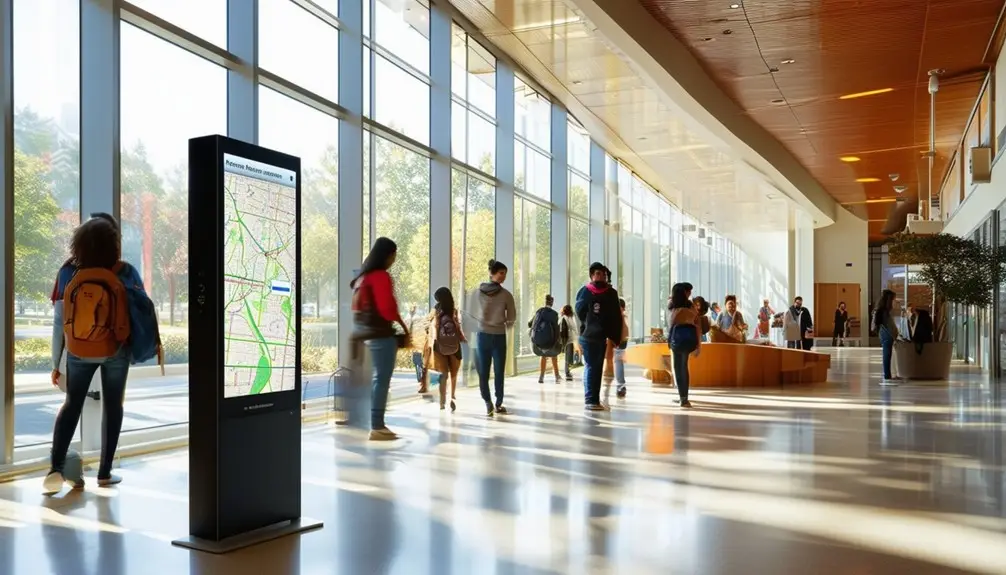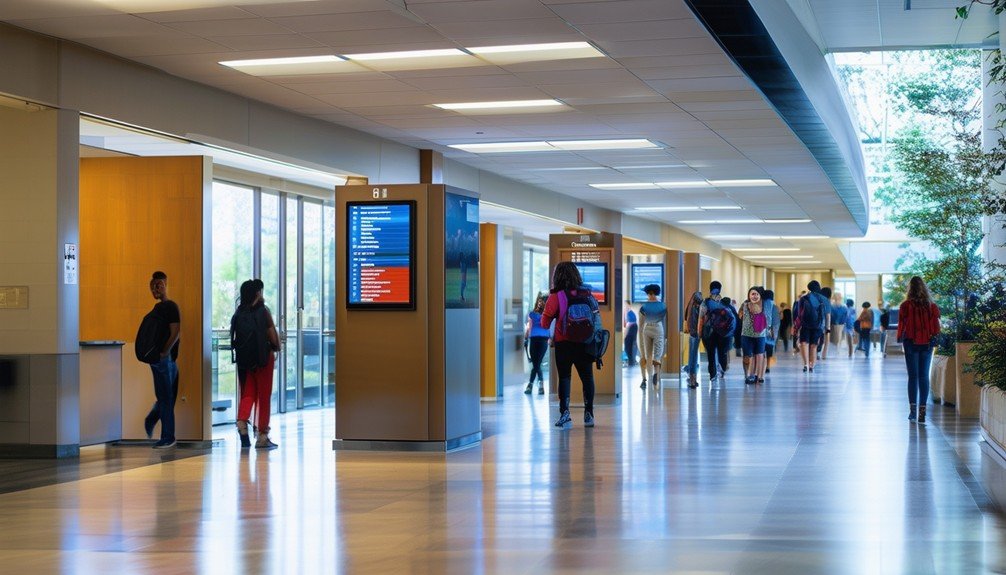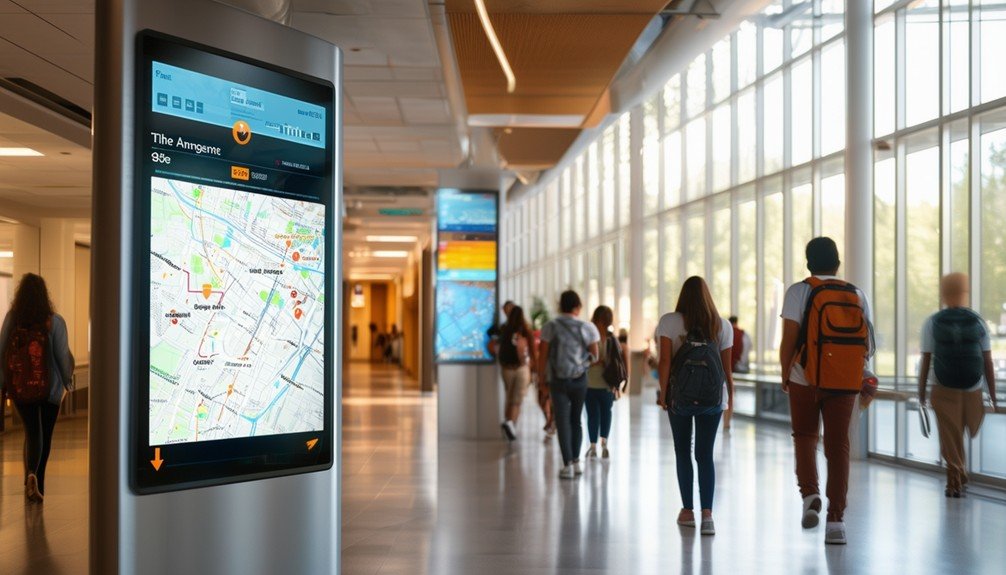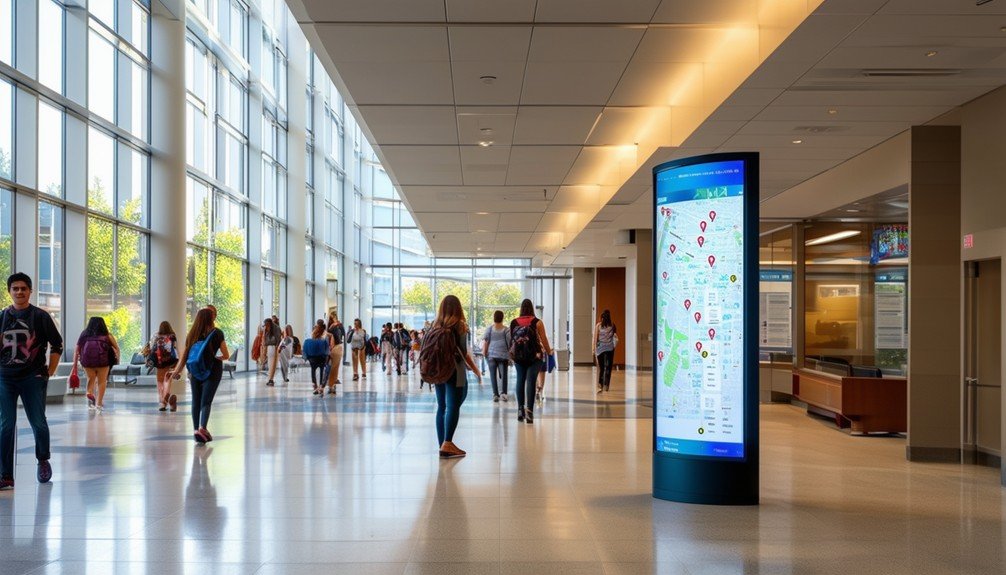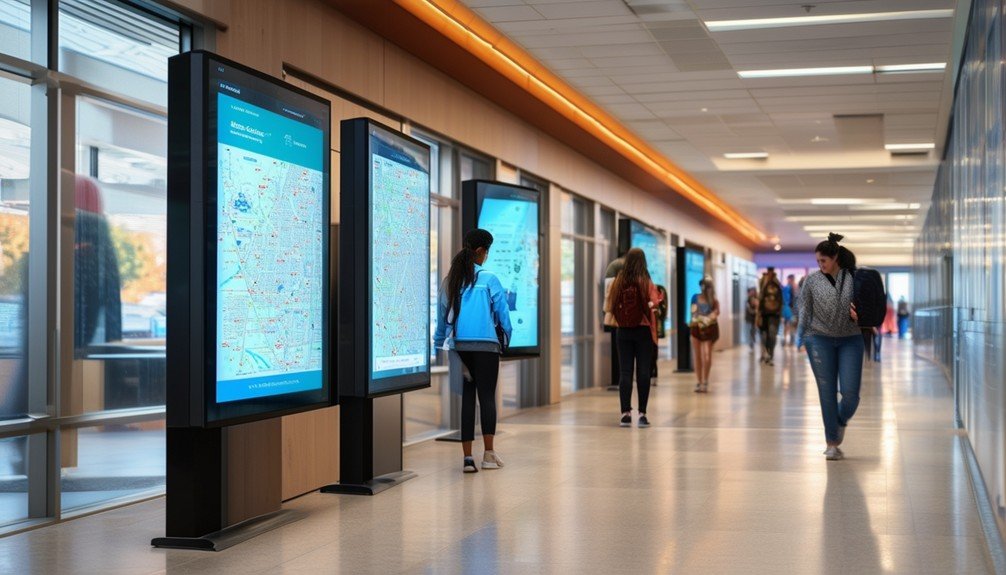Implementing digital notice board software in colleges enhances communication efficiency and student engagement. You’ll benefit from real-time updates, interactive features, and centralized content management. Besides being eco-friendly by reducing paper use, these digital platforms offer vibrant displays for event promotions and emergency alerts. When choosing software, prioritize those with easy content management, robust security, and mobile accessibility. Make sure to evaluate screen sizes and connectivity options for best performance. With the right digital signage, your campus can foster a more connected and innovative community. Continue to get detailed insights into transforming your college communication strategies.
Key Takeaways
- Supports real-time updates and seamless information dissemination to the campus community.
- Offers customizable templates for various announcements, events, and emergency notifications.
- Ensures mobile accessibility for remote management of content and updates.
- Features robust security measures to protect sensitive information displayed on the notice boards.
- Integrates with other campus systems for a cohesive and centralized communication platform.
Transforming Higher Education
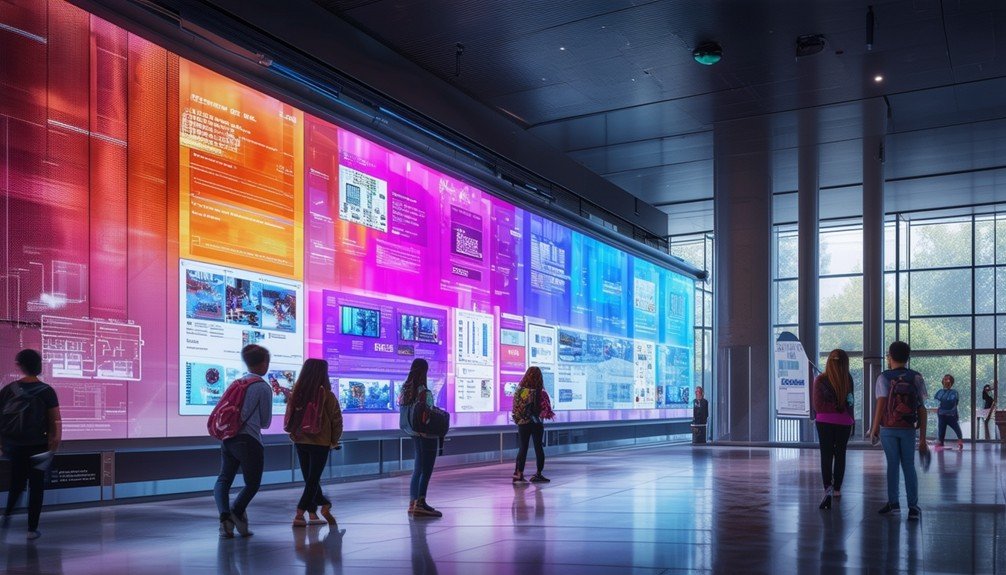
By integrating digital bulletin board software, colleges can greatly enhance communication and engagement within their communities. This change is vital for higher education, where timely and effective communication is essential. Utilizing digital display software, colleges can provide real-time updates and disseminate information seamlessly across the campus. This ensures that students, faculty, and staff are always informed about important announcements, events, and campus news.
Digital display solutions offer a dynamic and interactive way to engage the academic community. Instead of static, easily overlooked bulletin boards, digital screens capture attention with visually appealing and interactive content. This not only keeps everyone informed but also fosters a more connected and engaged campus environment.
Shifting to digital bulletin boards aligns with sustainability efforts by significantly reducing paper waste. In an era where environmental awareness is increasingly important, this change supports colleges’ sustainability goals and demonstrates a commitment to eco-friendly practices.
In higher education, adopting digital display software is a forward-thinking move that modernizes communication infrastructure. It’s not just about replacing traditional bulletin boards; it’s about creating an informative, engaging, and sustainable campus experience for everyone.
Enhancing Communication and Engagement
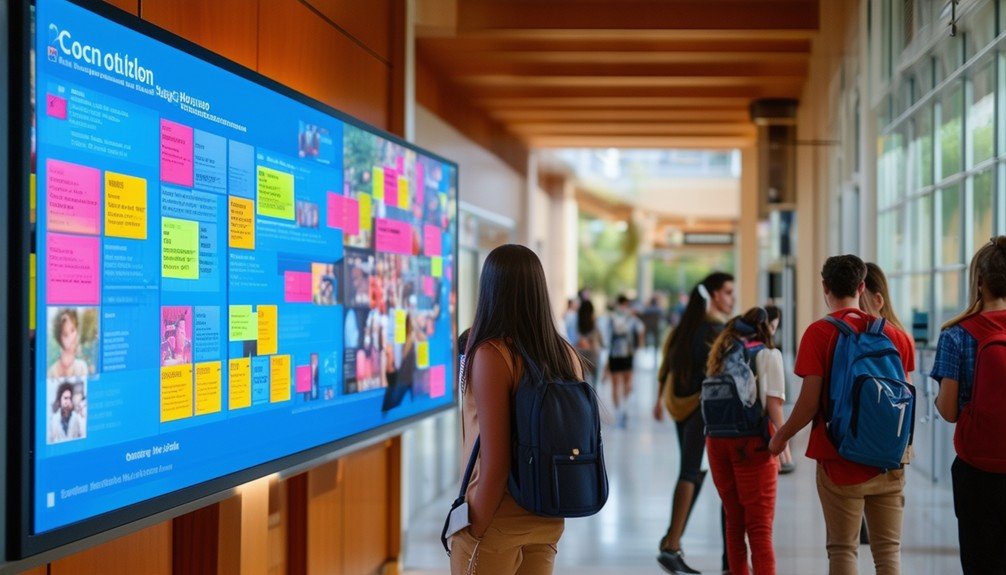
Digital notice board software transforms how colleges distribute information and involve their communities. By utilizing digital signage, you can create captivating content like student speeches, news capsules, and event calendars that capture attention. This software allows you to manage content efficiently, ensuring timely updates and relevant information. With robust content management features, you can quickly share important announcements, exam schedules, and administrative notices, streamlining communication across campus.
Engagement is greatly enhanced through dynamic and creative displays on digital screens. These displays promote innovation and encourage student participation by showcasing their work and achievements. For example, displaying student projects or club activities fosters a sense of community and pride. Additionally, transparent communication with parents is facilitated by displaying school facilities, faculty information, and vital updates, keeping them informed and involved.
In emergencies, digital notice board software becomes essential. You can rapidly alert everyone on campus and provide clear safety instructions, ensuring effective communication during critical situations. By integrating digital signage into your college’s communication strategy, you not only enhance engagement but also create a more connected and informed campus community.
Benefits of Digital Signage
Implementing digital signage in colleges offers numerous advantages, from enhancing communication efficiency to promoting a more eco-friendly campus. By using digital signage software, you can instantly disseminate important announcements, events, and campus information in real-time, ensuring everyone stays informed. This immediacy is essential in dynamic college environments where timely updates can make a notable difference.
Digital signage also reduces the reliance on traditional paper-based methods, promoting sustainability and cost-efficiency. You don’t need to print countless posters and flyers, which not only saves money but also helps in reducing waste, supporting your campus’s green initiatives.
The interactive features available on digital notice boards can significantly enhance student participation and engagement. By allowing students to interact with the content, you foster a more inclusive and engaging campus atmosphere.
Centralized management of digital signage content streamlines information sharing, ensuring consistent messaging across the college campus. This centralized approach means you can update all digital notice boards from one location, maintaining uniformity and coherence in your communications.
In essence, digital signage software transforms how you manage and share information, making college life more connected, efficient, and sustainable.
Digital Signage Features
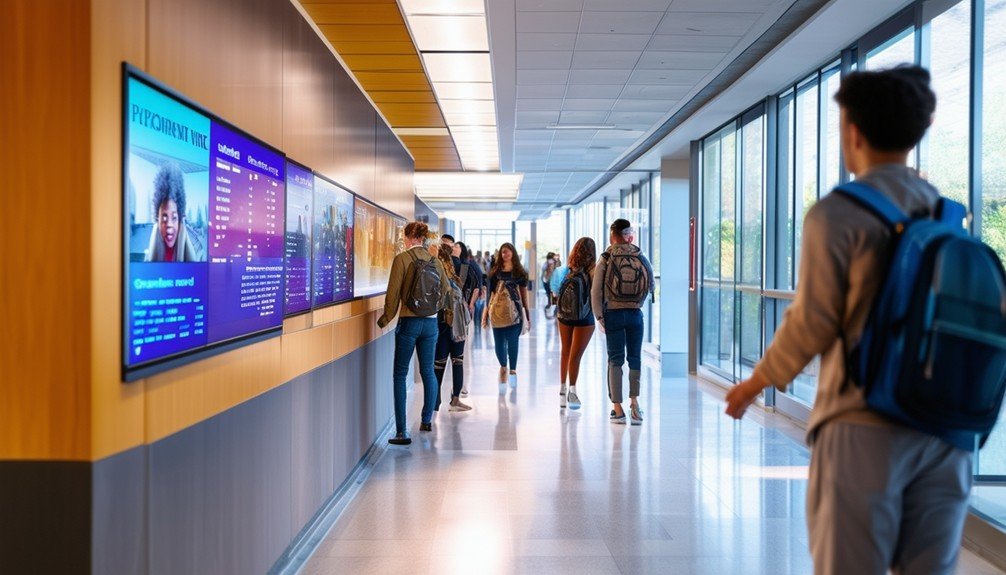
One standout feature of digital notice board software is its customizable templates, allowing colleges to tailor content for various purposes such as showcasing student achievements and announcing campus events. You can easily adapt the templates to match your institution’s branding, guaranteeing a professional and cohesive look across all digital displays.
Digital signage features also include real-time updates, so important announcements like exam schedules and safety protocols are always current. With easy content management, you can remotely control what appears on the screens, making it simple to keep information relevant and timely.
Another key aspect is social media integration. By incorporating live feeds from platforms like Twitter and Instagram, you can engage students and staff in a dynamic way, fostering a sense of community. This integration allows for instant sharing of campus events and achievements, boosting visibility and participation.
Event calendars are another powerful feature, helping you keep everyone informed about upcoming activities and important dates. By displaying these calendars prominently, you guarantee that no one misses out on opportunities to get involved.
These digital signage features not only enhance communication but also promote a vibrant campus atmosphere, encouraging active participation and community engagement.
Effective Campus Communication
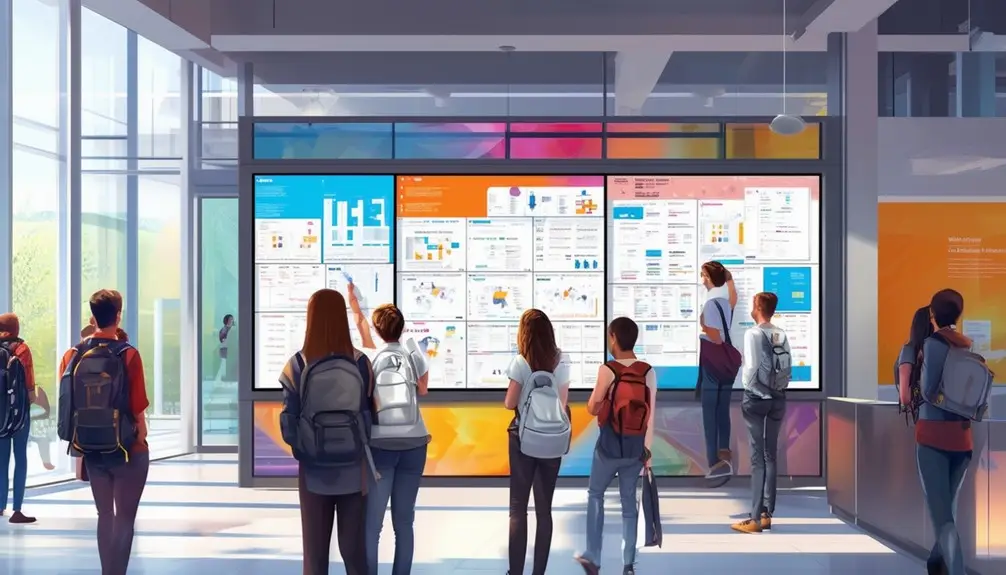
Effective campus communication hinges on the ability to share real-time updates and important information seamlessly across various platforms. A digital signage system is ideal for this, allowing colleges to display dynamic content like announcements, events, and news. By using an easy-to-use notification system, you can guarantee that vital information reaches students and staff instantly, enhancing overall campus connectivity.
The customization options of digital notice board software mean you can tailor content to highlight student achievements, faculty profiles, and ongoing campus updates. This not only keeps everyone informed but also fosters a sense of community and pride within the institution. The real-time capabilities ensure that emergency notifications and safety protocols are disseminated quickly, which is crucial for maintaining a safe campus environment.
The ability to promote events and engage students through visually appealing displays makes digital signage a versatile tool. It simplifies the communication process, ensuring that messages are not just sent but also received and understood. Implementing an easy-to-use digital signage system can greatly streamline your campus communication, making it more efficient and effective for everyone involved.
Hardware Selection Tips
When choosing hardware for your college’s digital notice boards, prioritize screen size and resolution to guarantee clear visibility and readability. Ensure the hardware is compatible with your software for seamless integration and reliable performance. Additionally, consider connectivity options to support smooth operation and regular content updates.
Screen Size Considerations
To ensure your digital notice board effectively communicates across campus, consider screen size based on viewing distance and content visibility needs. When selecting digital signage for colleges, you must guarantee screens are large enough to allow easy reading and engagement. For indoor settings, a screen size of 32 to 50 inches is typically ideal, providing clear visibility for students and staff without overwhelming the space.
For outdoor digital notice boards, larger screens, ranging from 55 to 75 inches or more, can be necessary to guarantee announcements, events, and important information are easily readable from a distance. Visibility is optimal in open areas where people may not be able to approach the screen closely. High-brightness displays are also recommended for outdoor use to combat sunlight glare and maintain readability.
It’s essential to strike a balance between visibility and cost-effectiveness. Larger screens can be more expensive, so evaluate your budget and the specific needs of each location. Conduct site assessments to determine optimal screen sizes, ensuring each digital notice board serves its intended purpose efficiently. This careful planning will help you maximize the impact of your digital signage across campus.
Connectivity and Compatibility
Selecting hardware for your digital notice board software involves focusing on compatibility with various devices and robust connectivity options. To achieve seamless integration and future-proof your system, it is crucial to emphasize a few key areas.
First, ensure the digital signage software you choose is compatible with various hardware options, including digital screens, TVs, and interactive displays. This flexibility will allow you to optimize your setup based on your specific needs.
Next, prioritize connectivity features such as Wi-Fi, Bluetooth, and Ethernet. These options will assist you in easily connecting the software to different devices, ensuring smooth operation and updates.
Look for hardware-agnostic solutions that support multiple operating systems like Android, Windows, and iOS. This flexibility will simplify the deployment and management of the software across different platforms.
Consider scalability options to expand your digital notice board network as required. This is particularly important for colleges and universities that may expand over time.
Lastly, assess the software’s capability to integrate with other systems like room booking software, calendars, and content management platforms for a cohesive digital ecosystem.
Choosing the Right Software
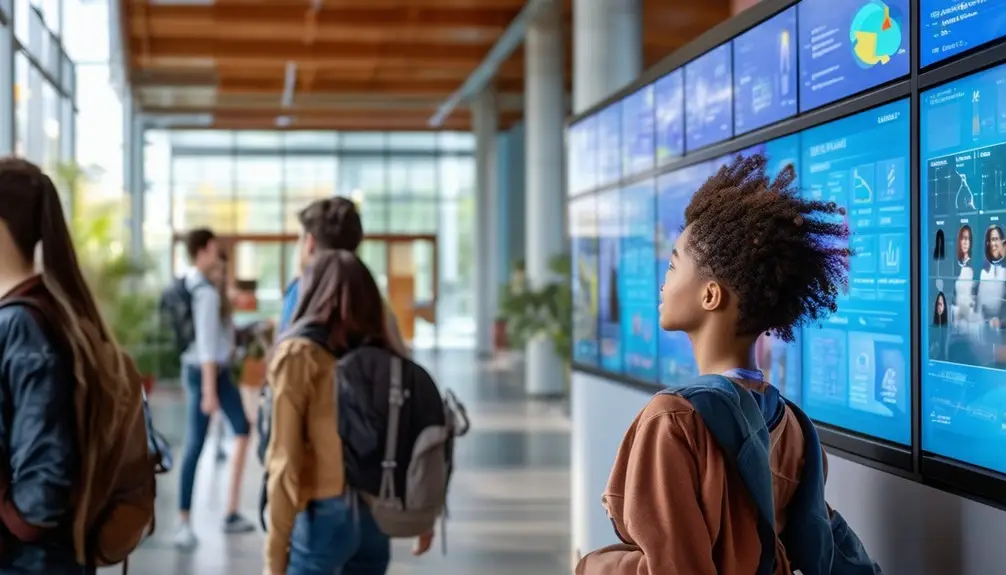
Choosing the right digital notice board software is vital for guaranteeing effective and streamlined communication on your campus. Start by considering digital signage software that offers easy content management. This feature is crucial for swiftly updating and scheduling announcements, campus events, and student activities. You’ll want software that supports various content formats, including images, videos, news tickers, and social media feeds, to keep your audience engaged and informed.
Welcoming guests and visitors is another important aspect. Look for customizable templates that can be tailored to greet different audiences, ensuring a professional and welcoming atmosphere. Mobile accessibility is a key factor as well; it allows you to manage your digital signage remotely, making real-time updates seamless and convenient.
Security should never be overlooked. Choose a solution that offers robust security features like user permissions and encryption to protect sensitive information displayed on the digital notice board. This guarantees that only authorized personnel can make changes, maintaining the integrity of your communications.
Utilizing Digital Signage Apps
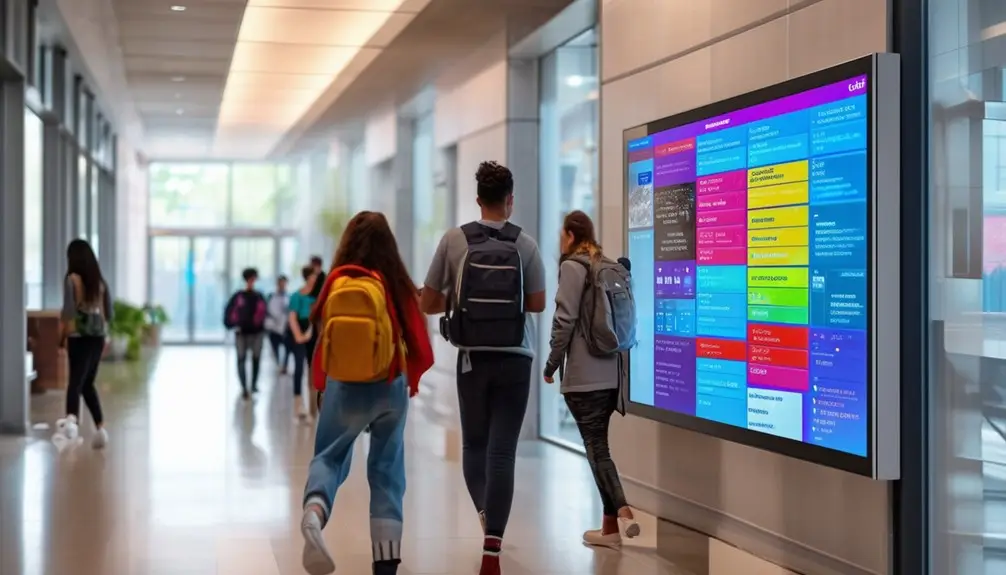
Harnessing the power of digital signage apps can significantly enhance student engagement and streamline campus communication. By implementing digital signage software for schools, you provide an interactive platform that keeps students informed and involved. These apps offer a range of features designed to improve the overall efficiency of content management and communication on campus.
Consider these key benefits:
- Interactive Features: Engage students with touch screens and interactive displays.
- Easy Content Management: Schedule and manage content effortlessly with playlist functions.
- Social Media Integration: Connect with students using integrated social media feeds.
- Analytics Monitoring: Track content performance and audience engagement to refine strategies.
- Emergency Notification Systems: Guarantee safety with instant alerts and updates.
Incorporating digital signage software for schools enables you to create dynamic, engaging content that resonates with students. The easy content management features allow you to schedule announcements, events, and reminders in advance, reducing administrative burden. Social media integration offers a seamless way to keep students updated with real-time information from platforms they already use.
Emergency notification systems are a critical component, providing a reliable way to communicate urgent messages quickly and effectively. By leveraging these features, you can create a more connected and responsive campus environment, ultimately enhancing the educational experience for all.
Conclusion
To wrap up, digital notice board software can revolutionize your college’s communication and engagement strategies. Remember, ‘a stitch in time saves nine.’ By investing in the appropriate software and hardware now, you’ll save time and enhance efficiency in the long run. Utilize digital signage features and apps to simplify campus communication, ensuring information is timely and easily accessible. Choose wisely, and you’ll improve the educational experience for everyone on campus.
Frequently Asked Questions
What Is Digital Signage Software?
Digital signage software is a cloud-based platform that lets you create and manage digital notice boards. You can remotely update content in real-time, customize templates, and integrate apps, ensuring efficient, visually engaging communication.
What Is the Purpose of a Digital Notice Board?
Imagine a lighthouse guiding ships; a digital notice board illuminates your campus with essential announcements, schedules, and news. It replaces outdated paper methods, updating in real-time to keep everyone informed and engaged.
